The XPG Lancer CUDIMM RGB DDR5-9200 boasts impressive specifications, making it a strong contender for the best RAM available. The introduction of the clock driver (CKD) has truly opened up new possibilities for DDR5 memory. It is exciting to witness how even a tiny but significant component, such as the CKD, can propel DDR5 technology to new levels of speed with relatively less effort. This development has led to the emergence of a new category of DDR5 memory, known as CUDIMMs. Adata sells one of the fastest memory kits currently available, the XPG Lancer CUDIMM RGB DDR5-9200, which we'll be taking for a spin in this review.
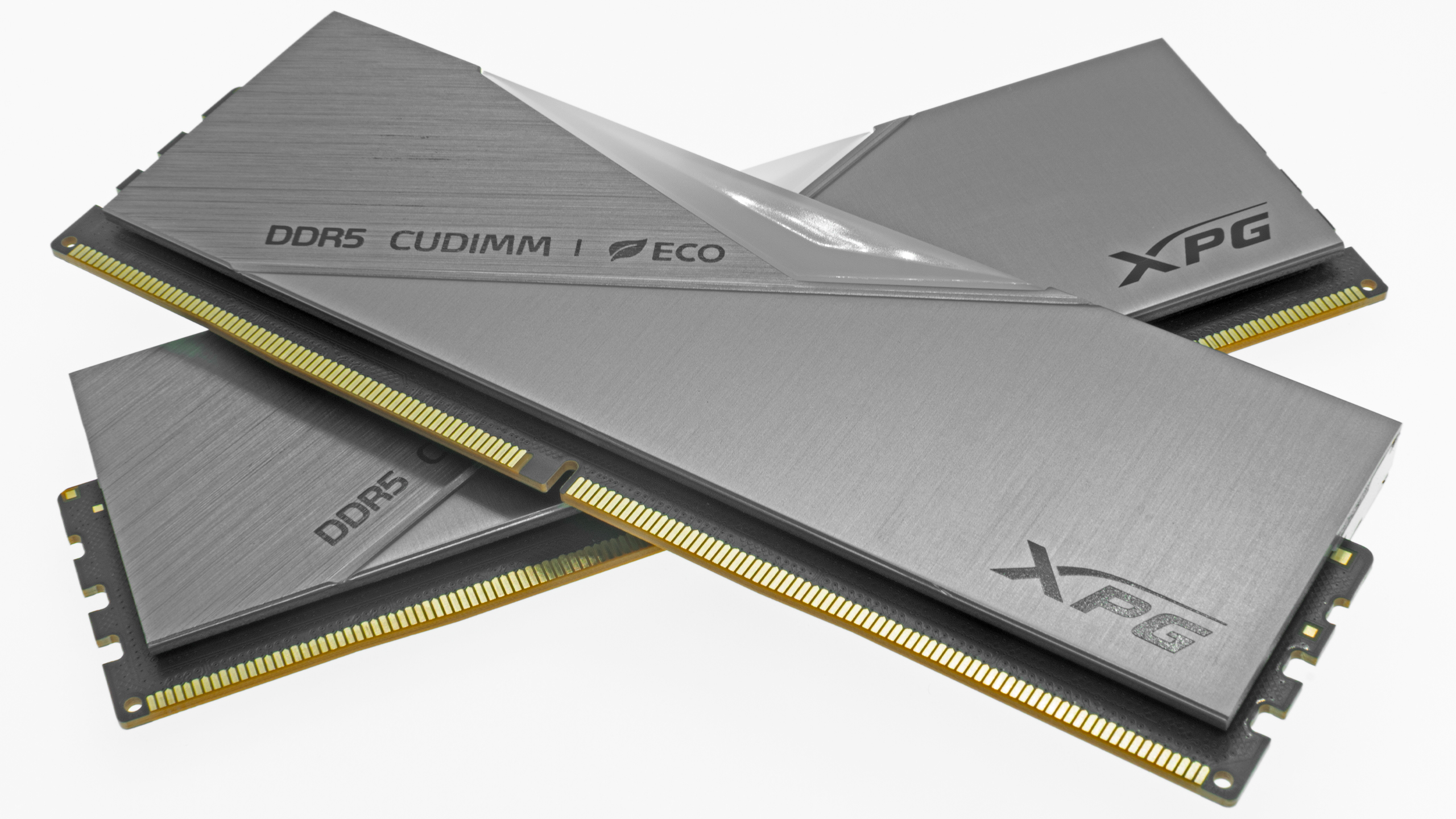
The Lancer CUDIMM RGB memory module features a silver-grey aluminum heat spreader with a brushed finish. Adata currently offers this model in only this color, so it's uncertain if the brand will introduce more options down the line. The design is quite minimalistic, with very subtle branding to keep things clean and simple. Interestingly, the heat spreader is made from 80% recycled aluminum, which Adata proudly highlights with the "Eco" logo.
With a height of 1.71 inches (43.56 mm), we don't expect the memory modules to cause any clearance conflicts with your CPU air cooler; however, your mileage may vary. The RGB diffuser sits on top of the heat spreader. Like other brands, Adata provides its own lighting control software, XPG Prime, for managing the memory's illumination. Alternatively, you can use motherboard software such as Asus Aura Sync, Gigabyte RGB Fusion 2.0, MSI Mystic Light Sync, or ASRock Polychrome.
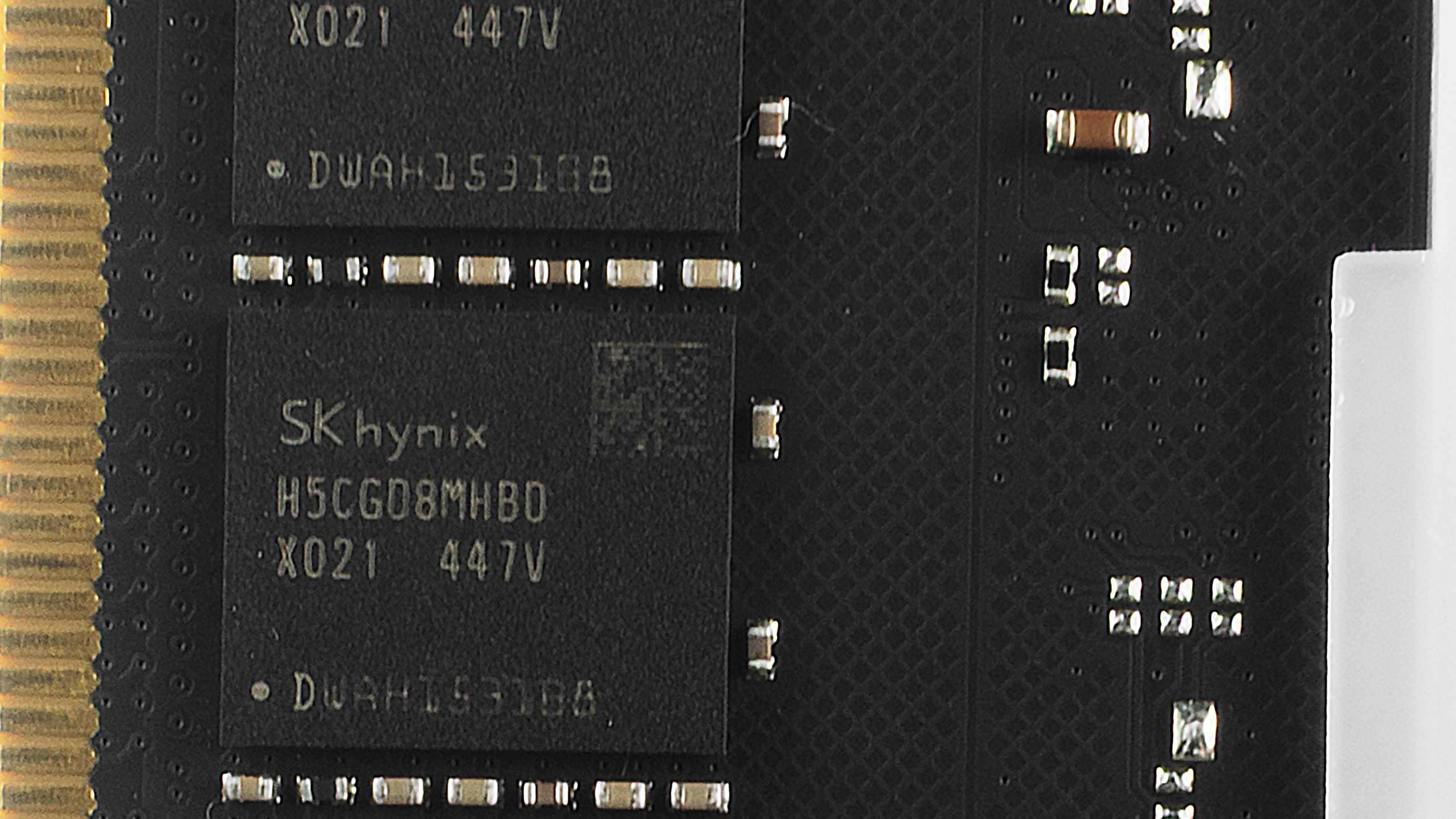
The 24GB memory modules feature a single-rank and single-sided layout. Each module contains eight 3GB integrated circuits (ICs) positioned on one side of the black PCB. The composition of these memory modules involves pairing SK hynix H5CGD8MHBDX021 (M-die) ICs with a Richtek 0P=BF AY8 power management IC (PMIC) and a Rambus DR5CKD1GC0 CKD.
By default, the memory modules operate at DDR5-6400 with timings of 52-51-51-102. This is an Intel XMP 3.0 memory kit; therefore, the profile is optimized for Intel systems. It will increase the memory to DDR5-9200 and configure the timings and DRAM voltage to 42-55-56-134 and 1.45V, respectively. Strangely, Adata didn't put a backup profile on the memory kit, which would be helpful given its high frequency — some processors may not have a strong enough memory controller to reach the peak speed in the lower-latency Gear 2 config. See our PC Memory 101 feature and How to Shop for RAM story for more timings and frequency considerations.
Comparison Hardware
Swipe to scroll horizontally
Adata XPG Lancer CUDIMM RGB | AX5CU9200C4224G-DCLACRSG | 2 x 24GB | DDR5-9200 (XMP) | 42-56-56-134 (2T) | 1.45 | Lifetime |
G.Skill Trident Z5 CK | F5-8800C4255H24GX2-TZ5CK | 2 x 24GB | DDR5-8800 (XMP) | 42-55-55-140 (2T) | 1.45 | Lifetime |
Corsair Vengeance RGB CUDIMM | CMHC48GX5M2X8400C40 | 2 x 24GB | DDR5-8400 (XMP) | 40-52-52-135 (2T) | 1.40 | Lifetime |
TeamGroup T-Force Xtreem | FFPD548G7200HC34ADC01 | 2 x 24GB | DDR5-7200 (XMP & EXPO) | 34-42-42-84 (2T) | 1.40 | Lifetime |
G.Skill Trident Z5 RGB | F5-7200J3646F24GX2-TZ5RK | 2 x 24GB | DDR5-7200 (XMP) | 36-46-46-115 (2T) | 1.35 | Lifetime |
Corsair Dominator Titanium First Edition | CMP48GX5M2X7200C36FEW | 2 x 24GB | DDR5-7200 (XMP) | 36-46-46-116 (2T) | 1.40 | Lifetime |
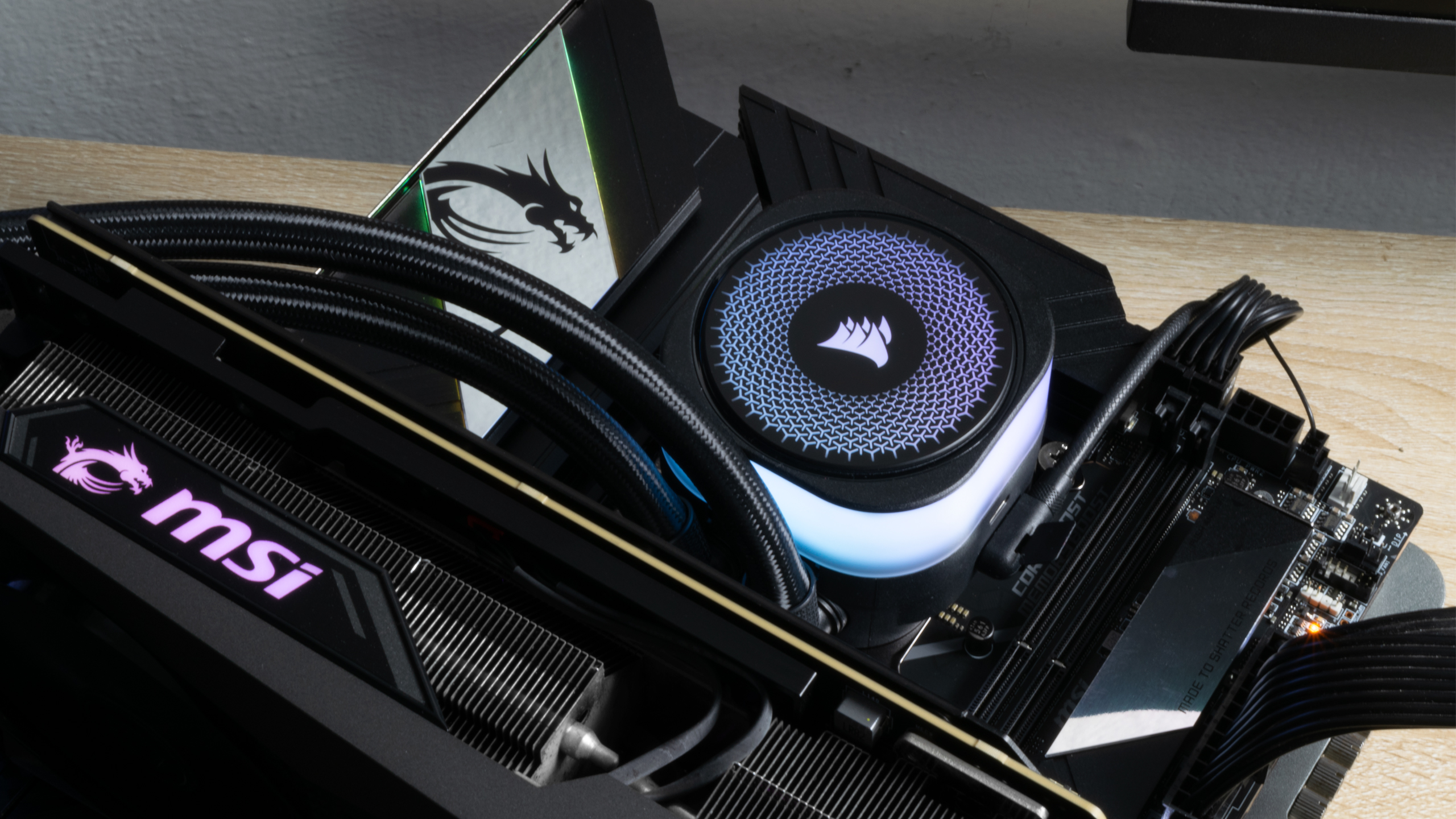
The Intel system comprises the Core Ultra 9 285K and the MSI MEG Z890 Unify-X (7E20v1A41 firmware), while the AMD system employs the Ryzen 9 9900X and MSI MPG X870E Carbon WiFi (7E49v1A23 firmware). The Corsair iCUE Link Titan 360 RX LCD CPU liquid cooler effectively maintains the operating temperatures of both the Arrow Lake and Zen 5 processors under optimal conditions.
The MSI GeForce RTX 4080 16GB Gaming X Trio addresses the more graphics-intensive workloads, ensuring that our gaming RAM benchmarks do not encounter a graphics bottleneck. TeamGroup's A440 Lite PCIe 4.0 SSD balances performance and storage capacity, with 2TB of high-speed storage up to 7,400 MB/s for our Windows 11 24H2 installation, benchmarking software, and games.
Meanwhile, the Corsair RM1000x Shift ATX 3.0 power supply delivers a reliable and ample power source to our test systems, directly feeding the GeForce RTX 4080 with a native 16-pin (12VHPWR) power cable. Finally, the Streacom BC1 open-air test bench accommodates all of our hardware.
Swipe to scroll horizontally
Processor | Intel Core Ultra 9 285K | AMD Ryzen 9 9900X |
Motherboard | MSI MEG Z890 Unify-X | MSI MPG X870E Carbon WiFi |
Graphics Card | MSI GeForce RTX 4080 16GB Gaming X Trio | MSI GeForce RTX 4080 16GB Gaming X Trio |
Storage | TeamGroup A440 Lite 2TB | TeamGroup A440 Lite 2TB |
Cooling | Corsair iCUE Link Titan 360 RX LCD | Corsair iCUE Link Titan 360 RX LCD |
Power Supply | Corsair RM1000x Shift | Corsair RM1000x Shift |
Case | Streacom BC1 | Streacom BC1 |
Intel Performance
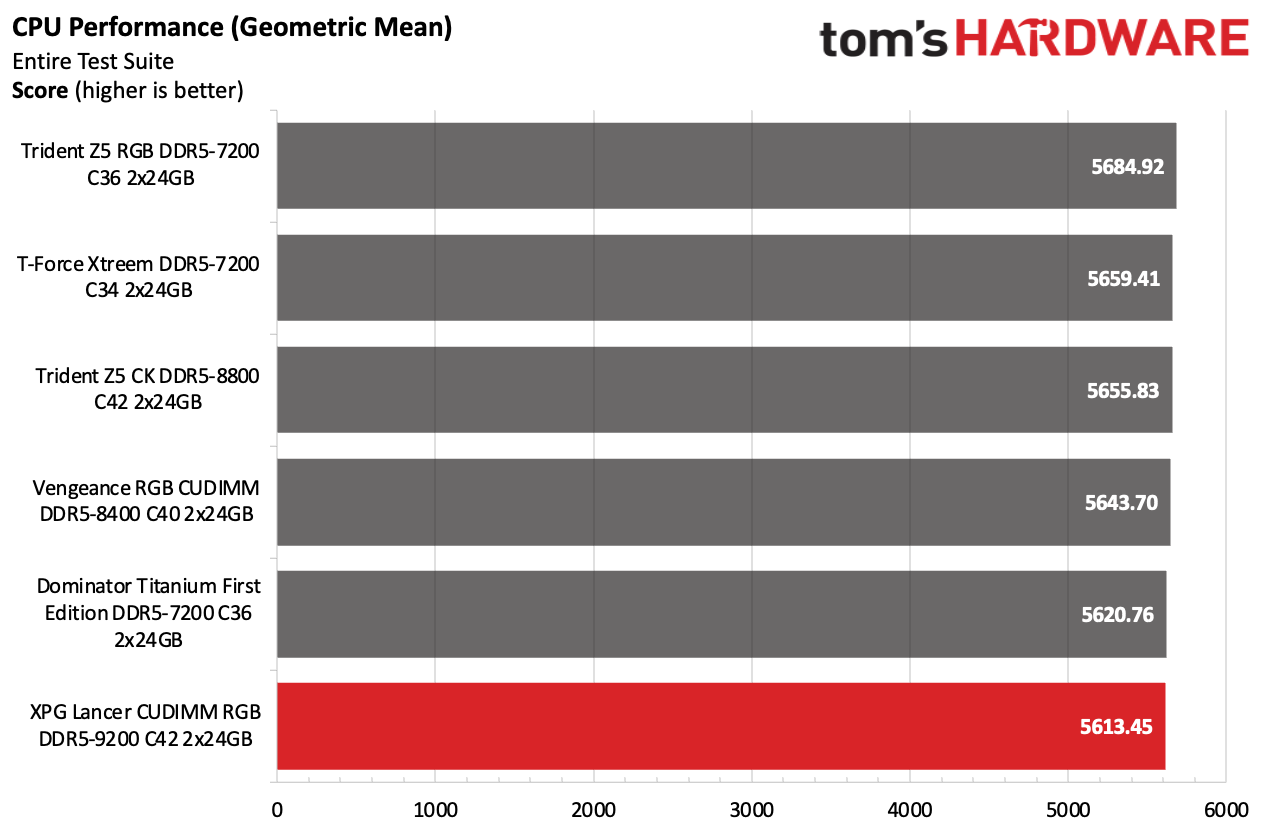
The Lancer CUDIMM RGB memory kit didn't perform the best in our tests for a few reasons. It has much more loose timings to achieve data rates like DDR5-9200, and it's a lottery whether an Arrow Lake processor can run this type of memory kit at Gear 2 or Gear 4.
In our case, the Core Ultra 9 285K sample can only run the memory kit at Gear 4 instead of Gear 2, which results in a significant performance drop. The memory's top performance was in the LuxMark benchmark, where it outperformed competitors.
AMD Performance
Regrettably, DDR5-9200 exceeds the limitations of our Ryzen 9 9900X and Ryzen 7 9700X samples. The integrated memory controller (IMC) of the Zen 5 processors cannot handle memory of this speed. Consequently, our system would not post with DDR5-9200 memory. Unfortunately, AMD's existing platform doesn't fully leverage CUDIMMs' potential.
Overclocking and Latency Tuning
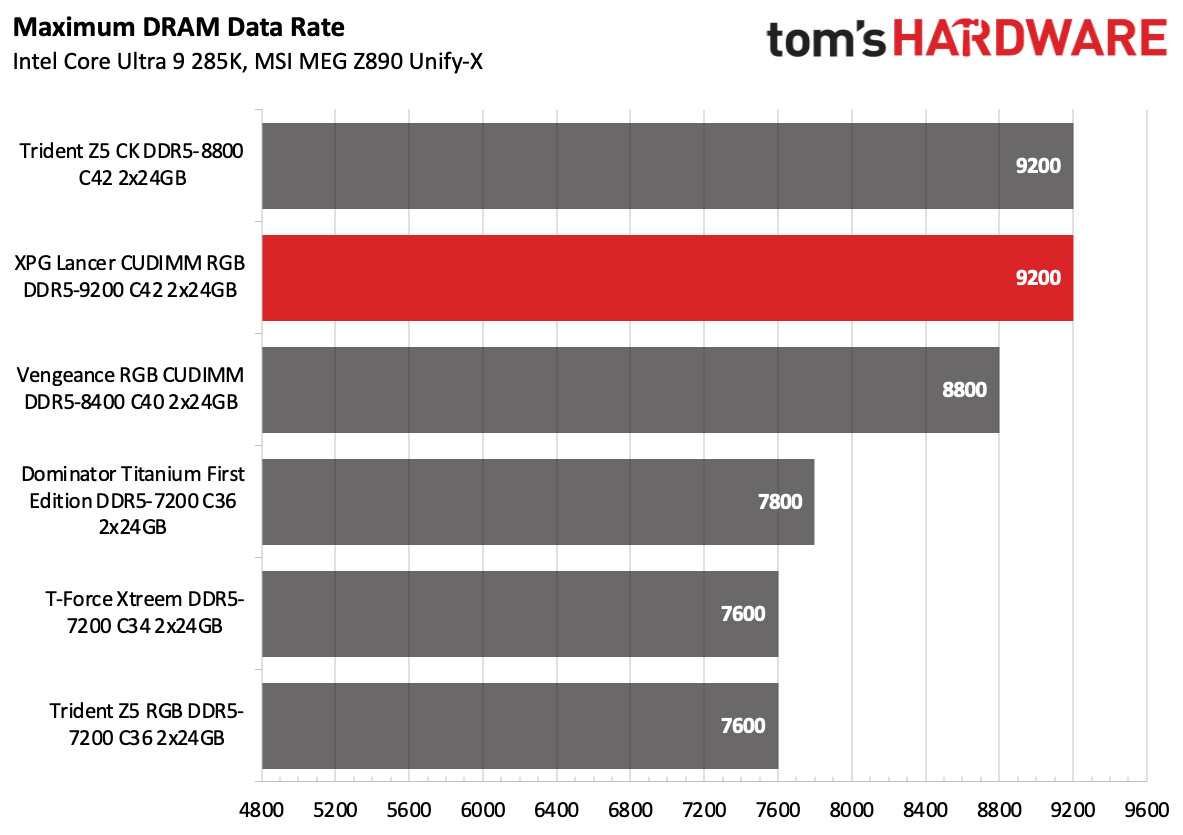
A 0.05V increase in DRAM voltage didn't produce any positive overclocking results. We attempted to relax the timings, but were unsuccessful. Perhaps using a voltage between 1.55V and 1.65V could allow the memory modules to reach higher speeds, but we chose not to pursue this option since we don't recommend a voltage that high for everyday usage.
Lowest Stable Timings
Swipe to scroll horizontally
G.Skill Trident Z5 CK DDR5-8800 C42 | N/A | 40-52-52-134 (2T) | N/A | N/A | N/A | 42-55-55-140 (2T) |
Corsair Vengeance RGB CUDIMM DDR5-8400 C40 | 38-50-50-128 (2T) | N/A | N/A | N/A | 40-52-52-135 (2T) | N/A |
Corsair Dominator Titanium First Edition DDR5-7200 C36 | 34-42-42-82 (2T) | N/A | N/A | 36-46-46-116 (2T) | N/A | N/A |
TeamGroup T-Force Xtreem DDR5-7200 C34 | N/A | N/A | 36-46-46-86 (2T) | N/A | N/A | N/A |
G.Skill Trident Z5 RGB DDR5-7200 C36 | 34-42-42-84 (2T) | N/A | 36-46-46-115 (2T) | N/A | N/A | N/A |
Adata XPG Lancer CUDIMM RGB DDR5-9200 C42 | N/A | N/A | N/A | N/A | N/A | N/A |
Buyers will be pleased to learn that the XPG Lancer CUDIMM RGB memory already operates with the tightest possible timings. Increasing the DRAM voltage to 1.5V and changing the timings resulted in instability. We suspect the memory will require a fair amount of voltage to run at lower timings, assuming it's possible in the first place.
Bottom Line
If you're a fan of cutting-edge hardware, the XPG Lancer CUDIMM RGB DDR5-9200 C42 is definitely the kind of toy you'll want. The memory kit is fast, looks great, and above all, it’s the kind of thing you can brag to your friends about. The memory kit doesn't come cheap, and it's a bit of a gamble because it would be naive to think that all Arrow Lake processors can handle DDR5-9200, let alone run it at Gear 2 (using Gear 4 causes a performance penalty). Your mileage will vary. That's not something specific to the XPG Lancer CUDIMM RGB DDR5-9200 C42 but an aspect to consider, in general, before buying any memory kit that is at the forefront of high-performance DDR5 memory.
Priced at $279.99, the XPG Lancer CUDIMM RGB DDR5-9200 C42 is relatively affordable compared to competitors. Adata's memory kit is priced similarly to competing and slower kits, like the DDR5-8400 or DDR5-8200 models. Nevertheless, it's a significant asking price for a 48GB kit, especially with good alternatives available under $200. Yet, those cheaper options lack the prestige of the XPG Lancer CUDIMM RGB DDR5-9200 C42.

 4 months ago
62
4 months ago
62
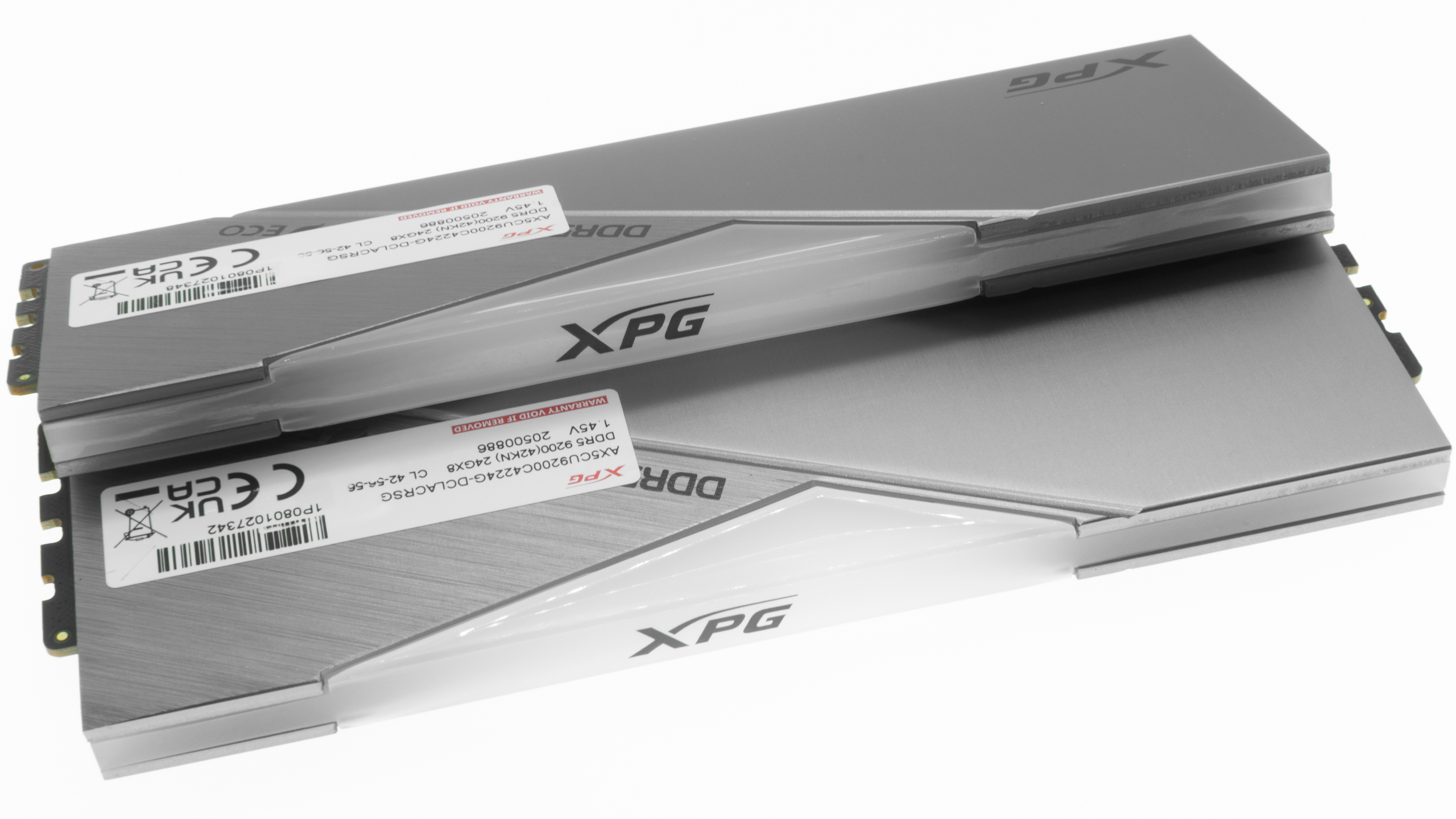
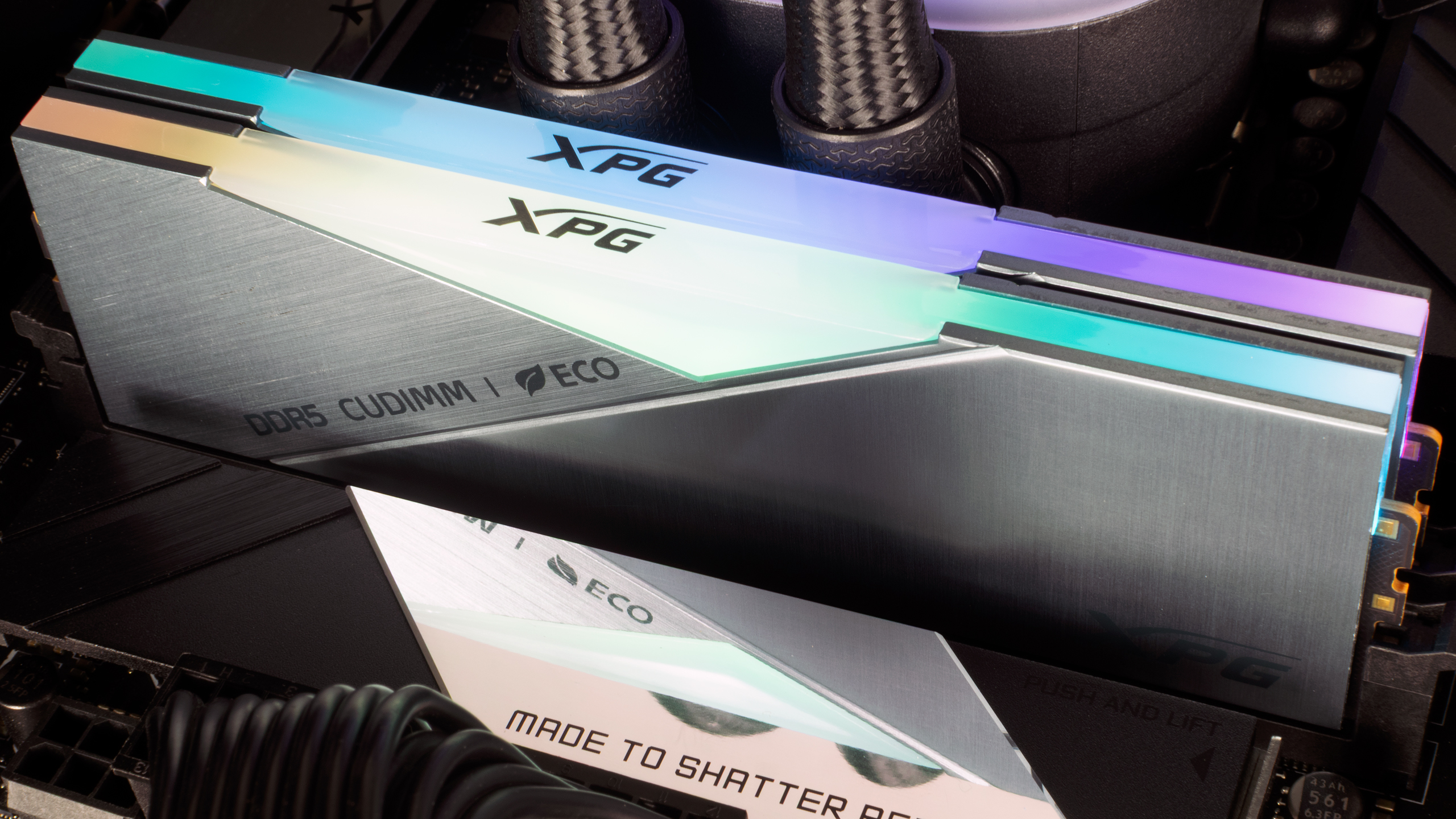
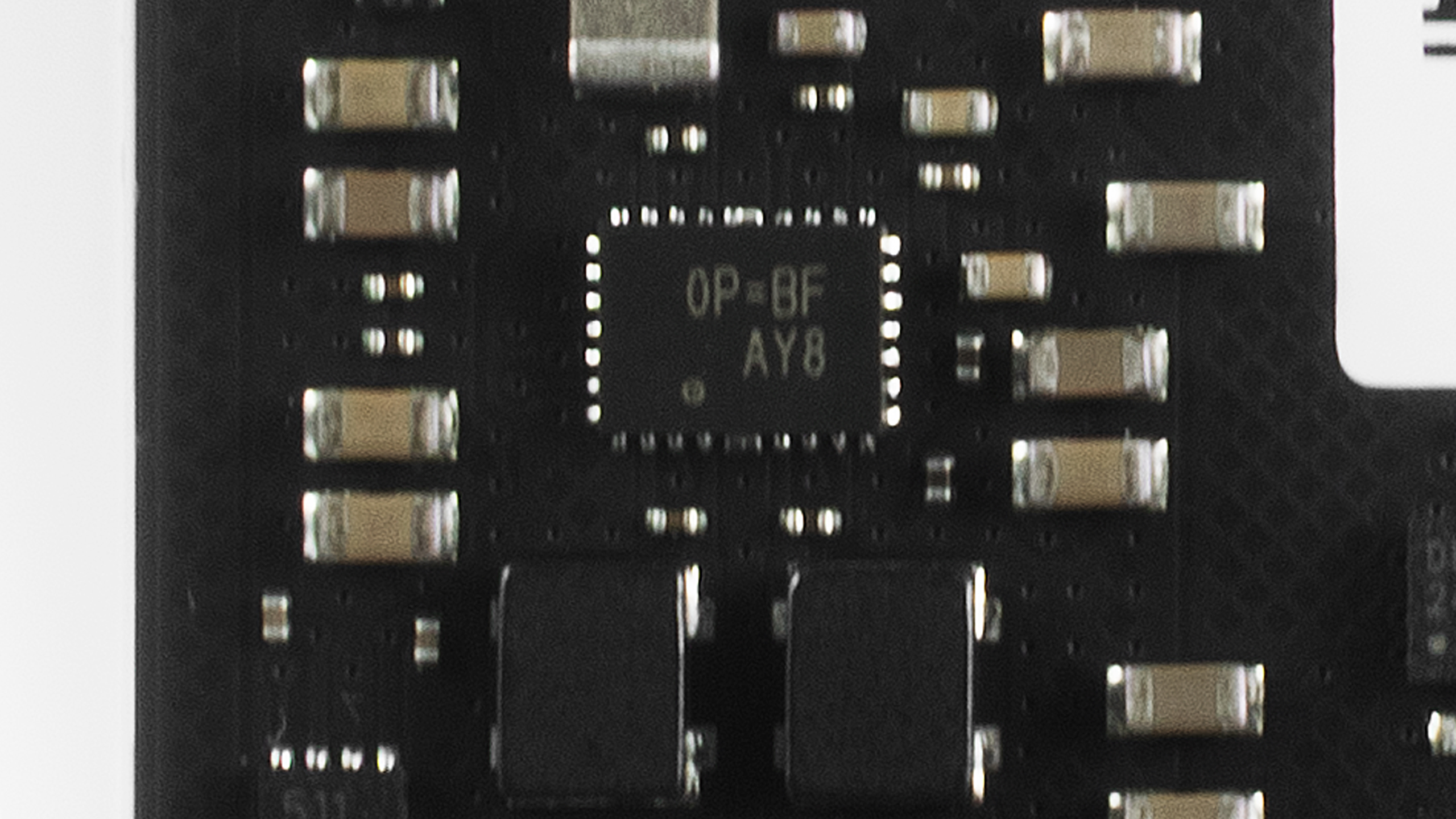
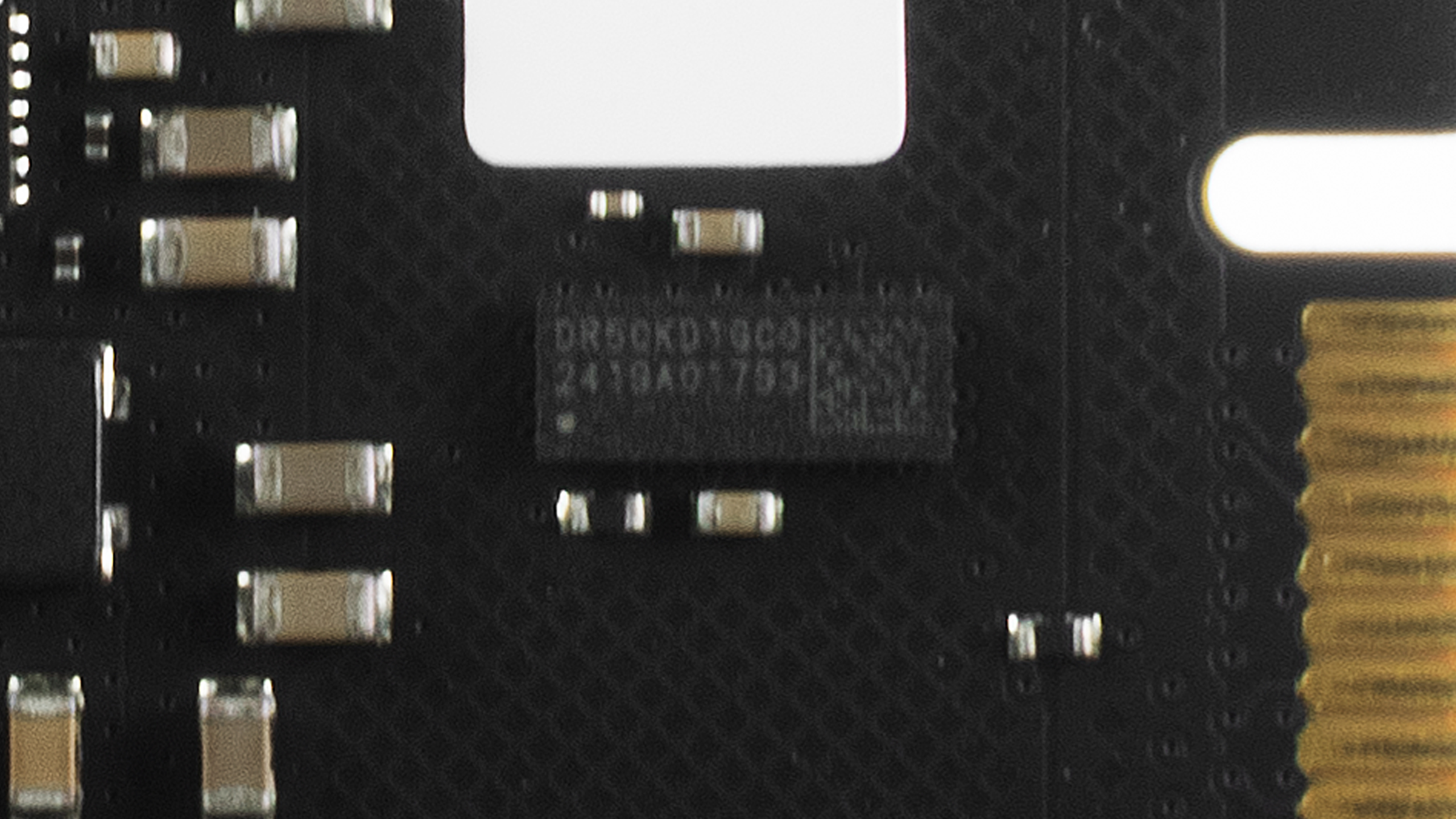
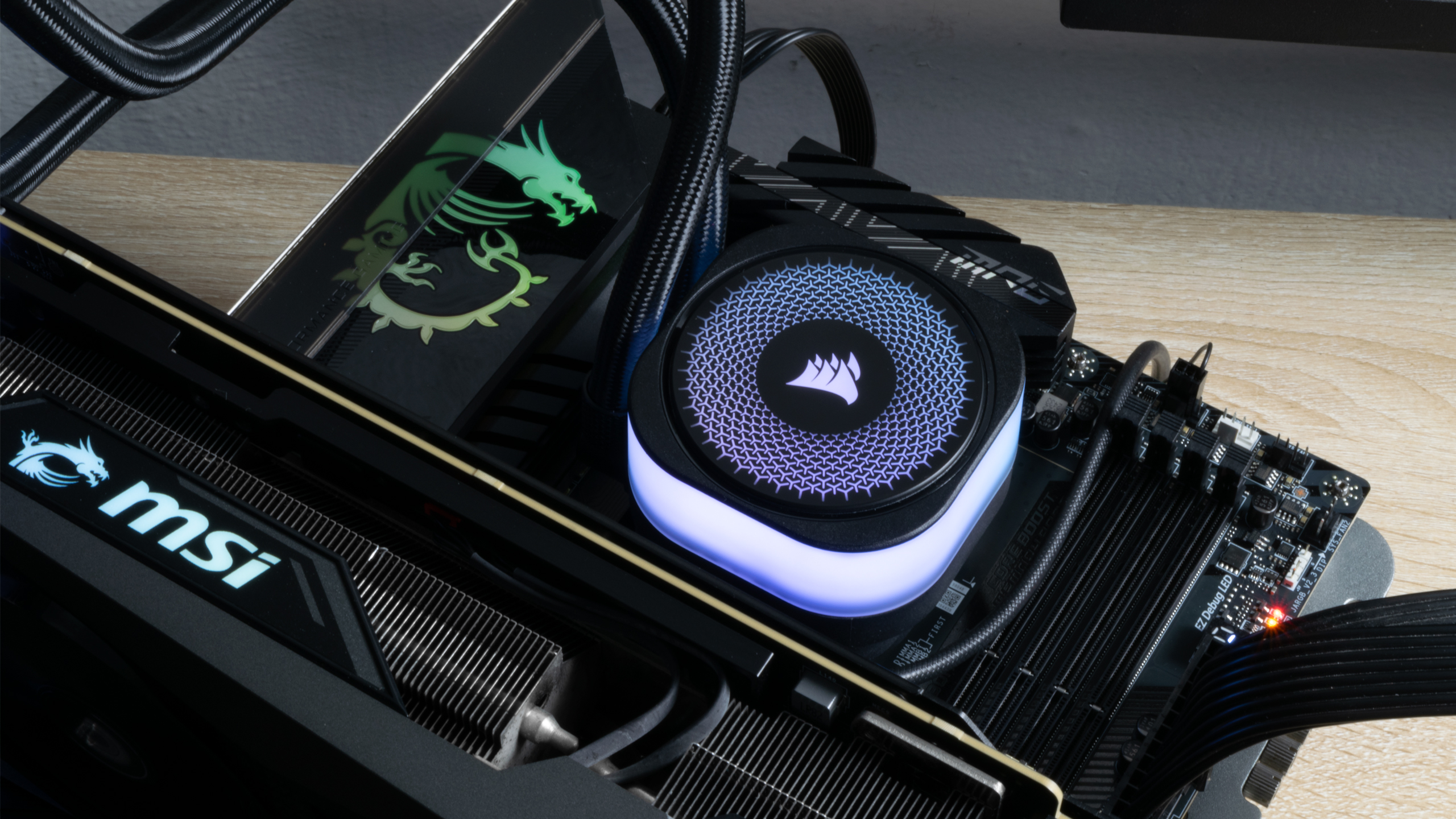
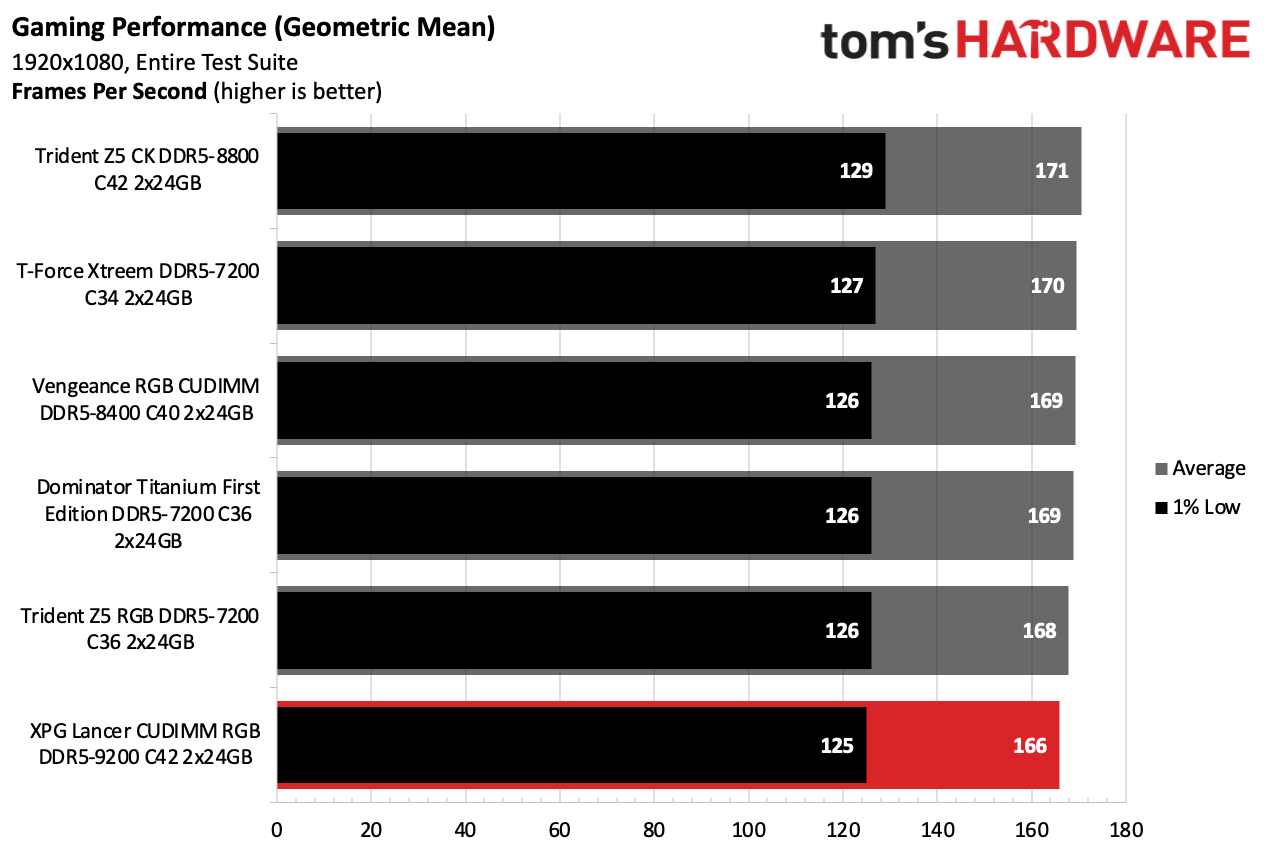
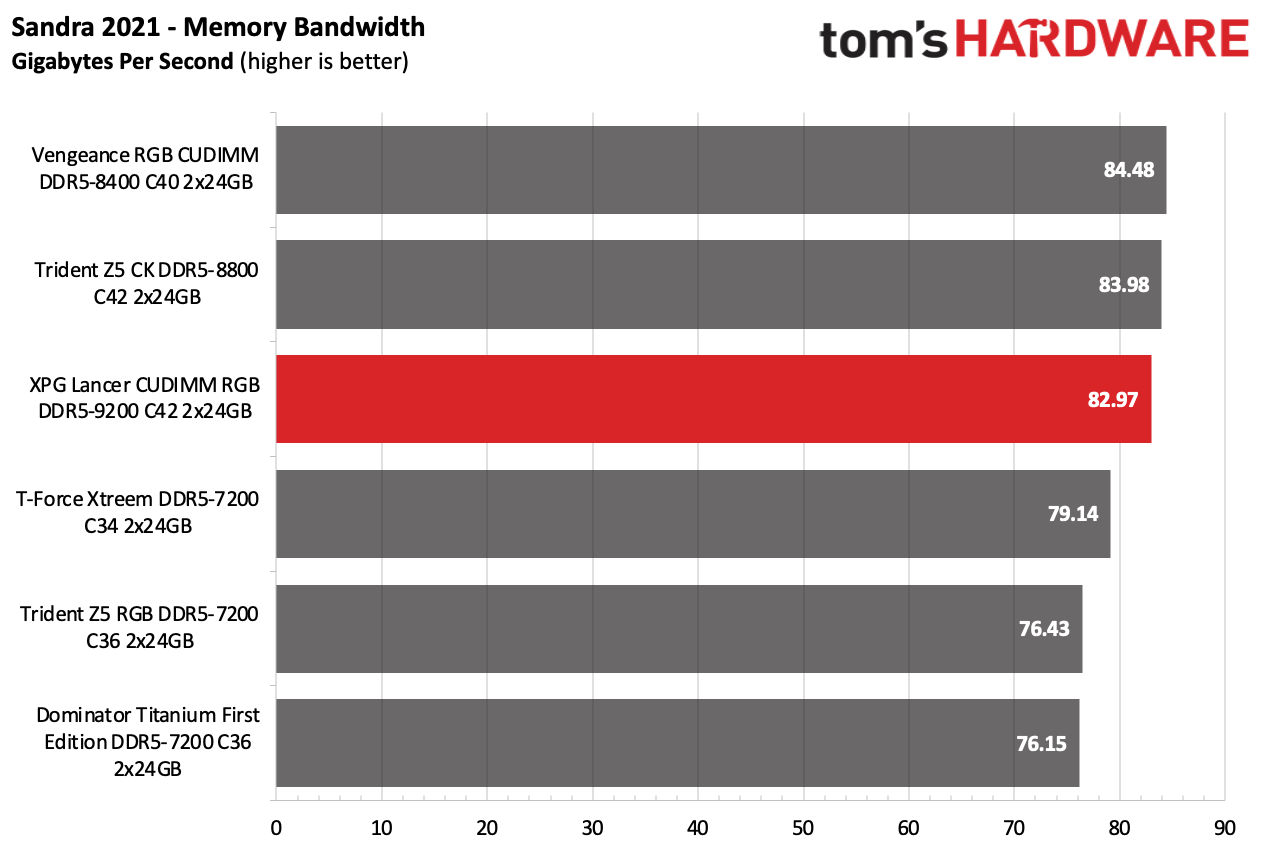
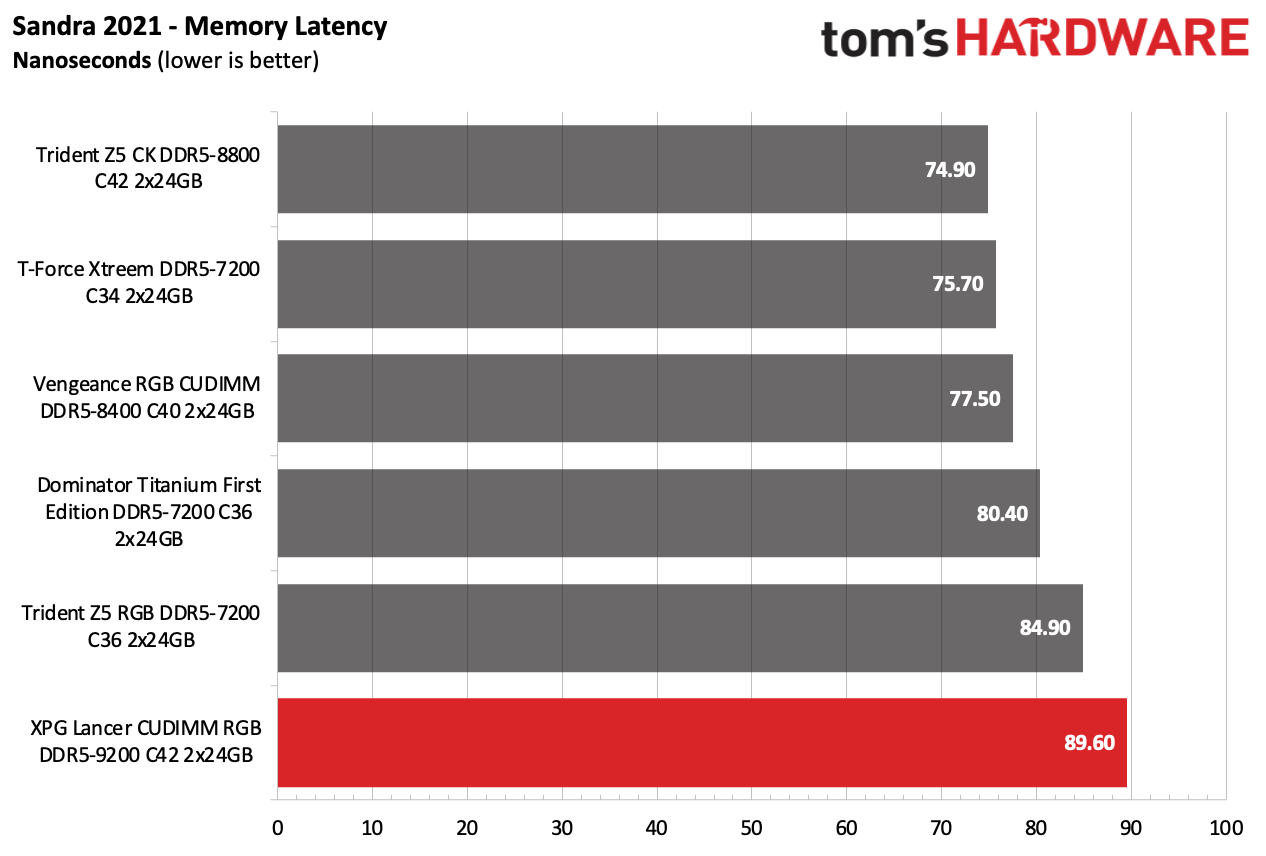
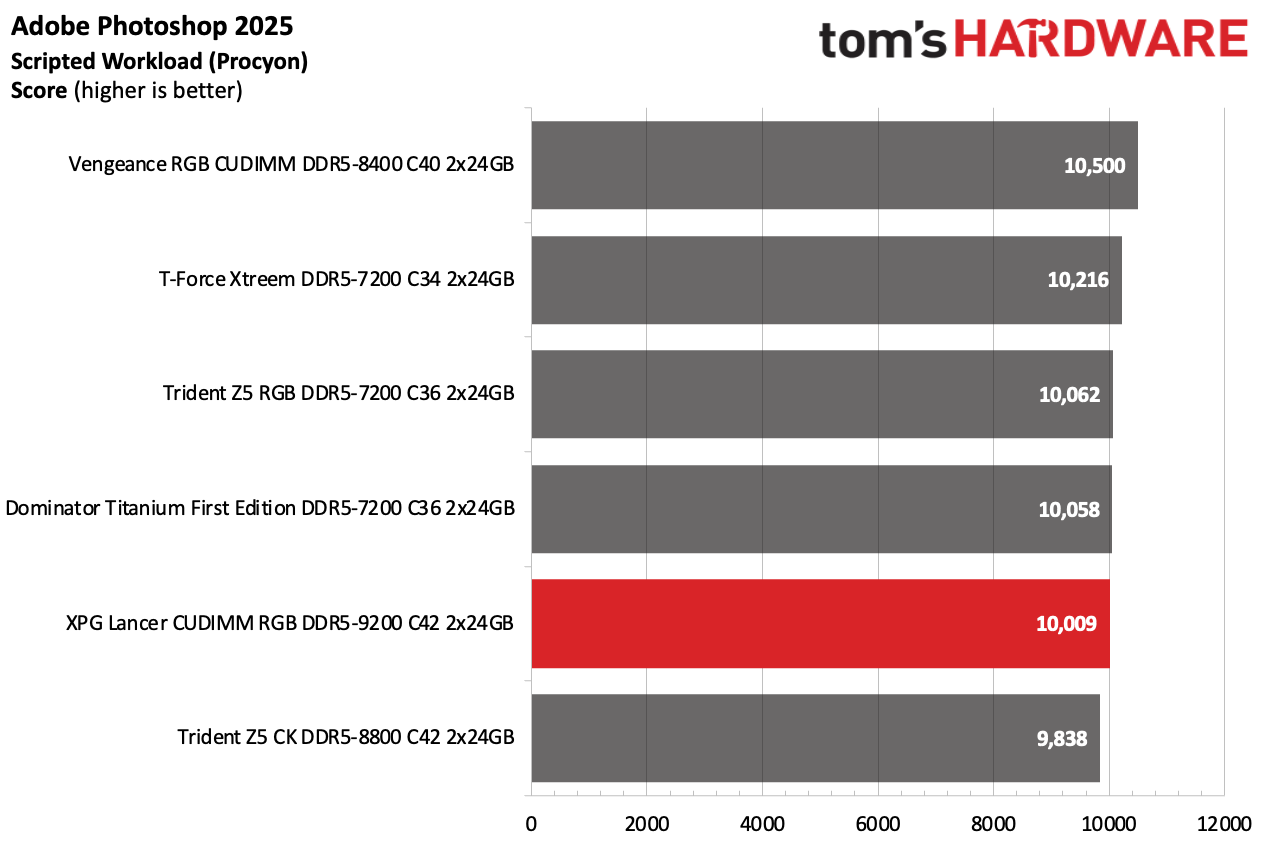
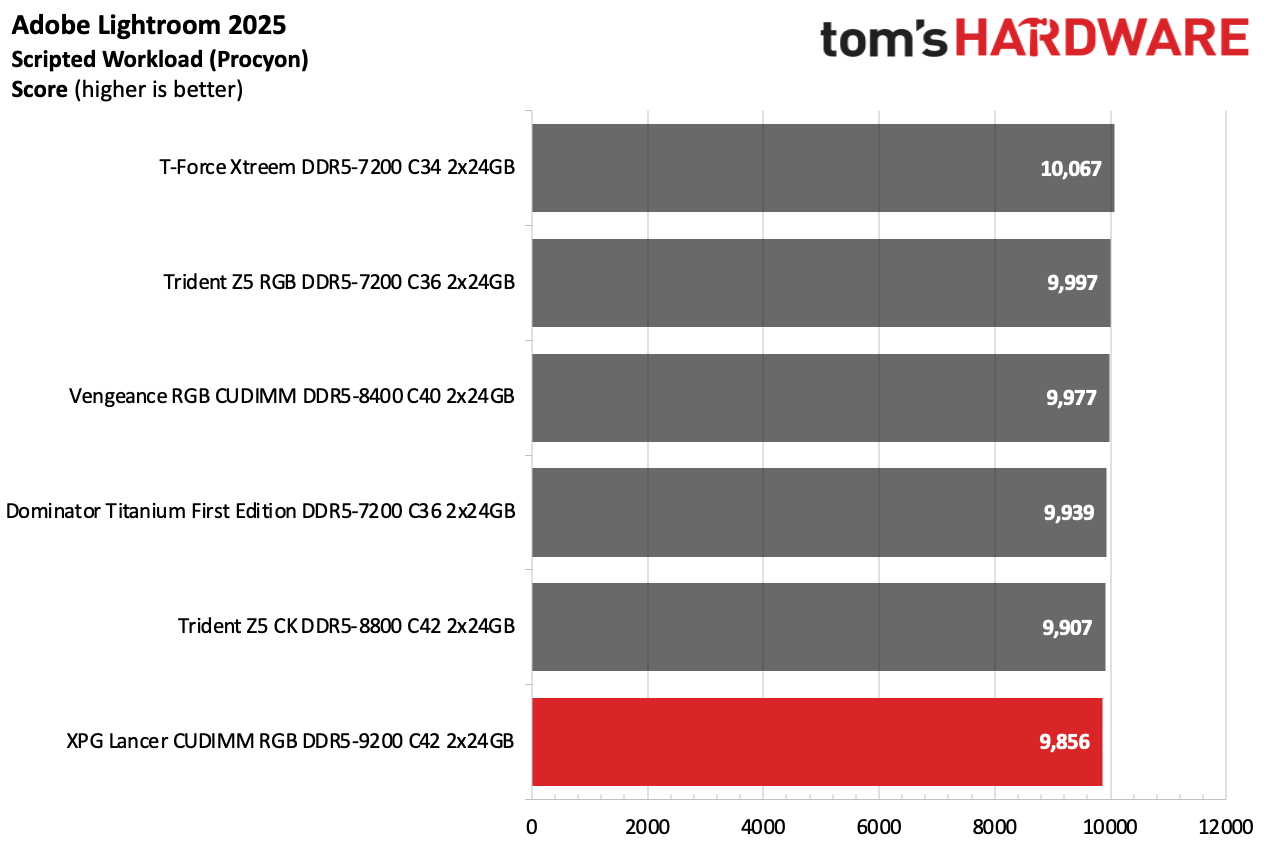
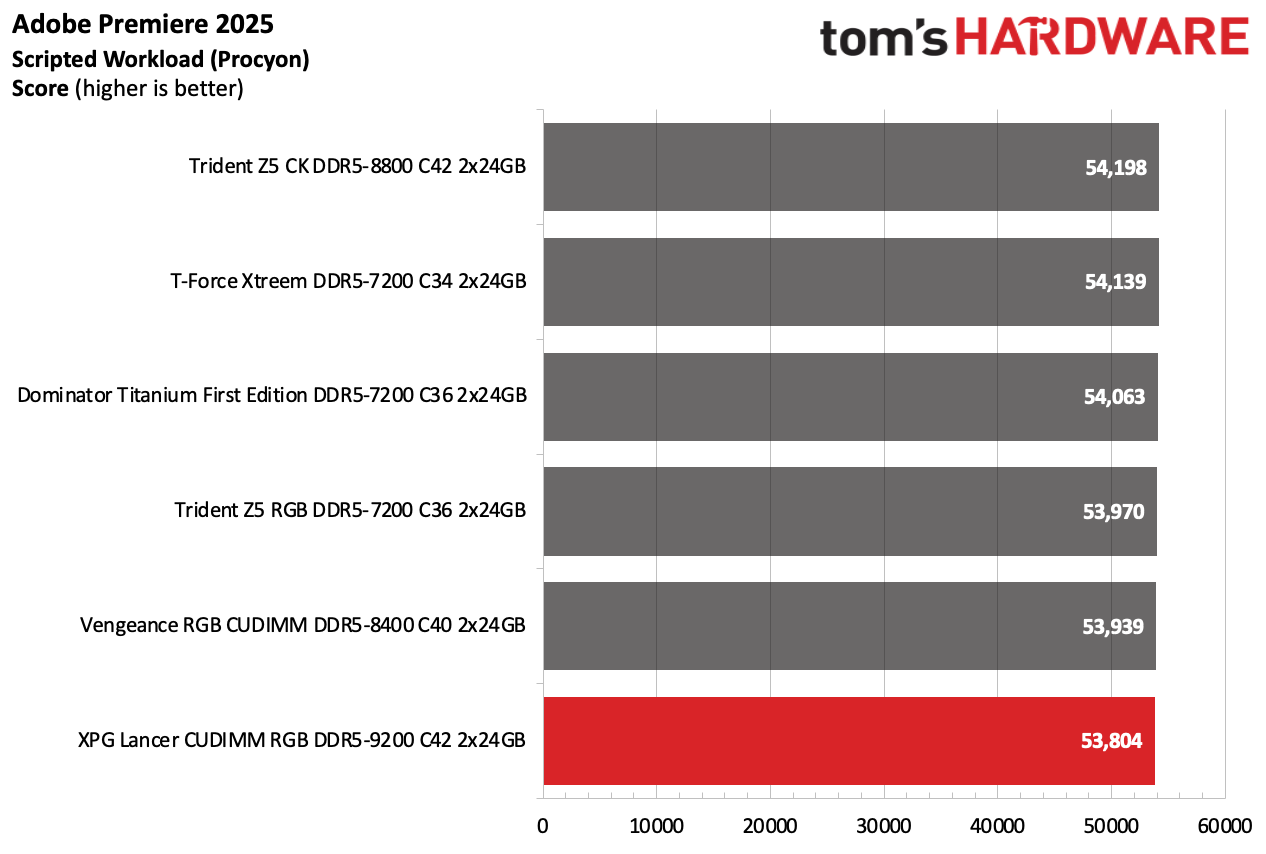
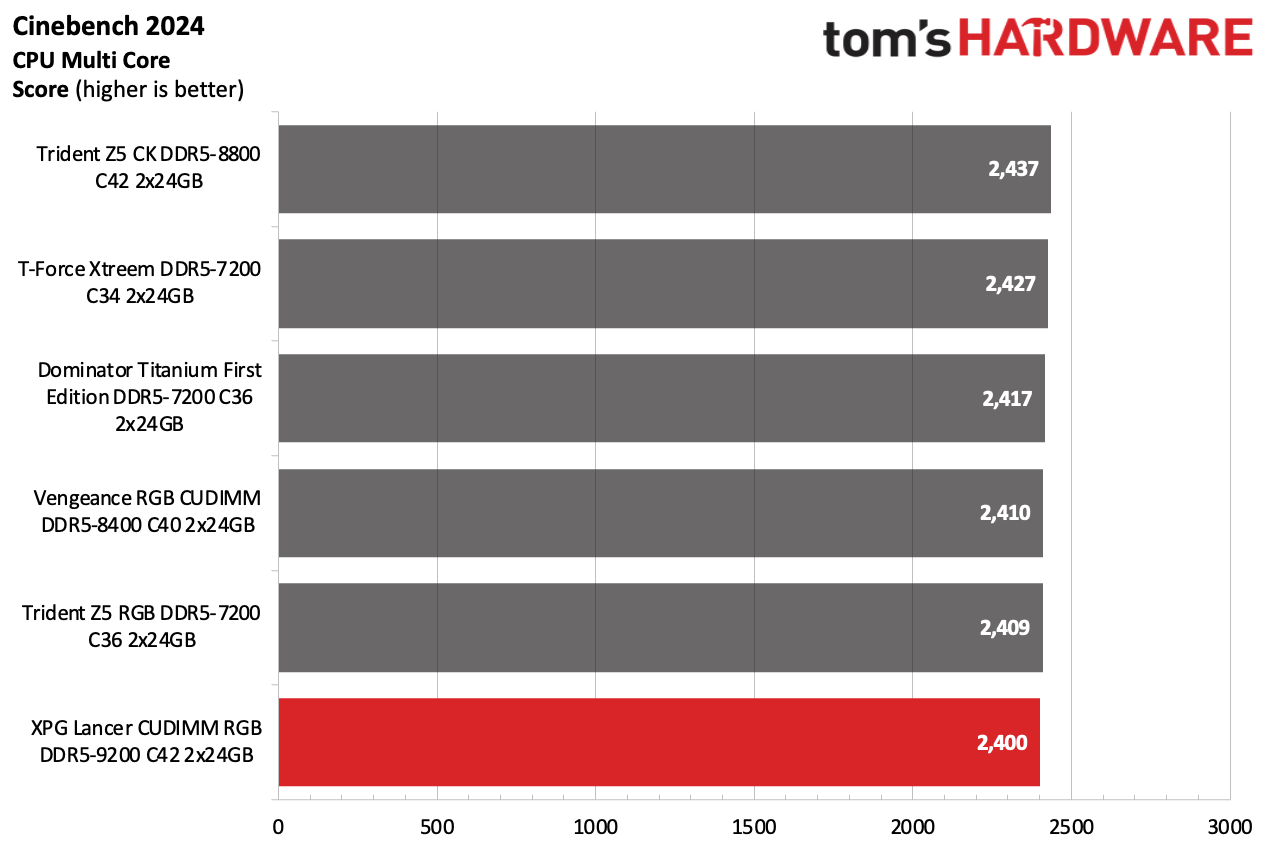
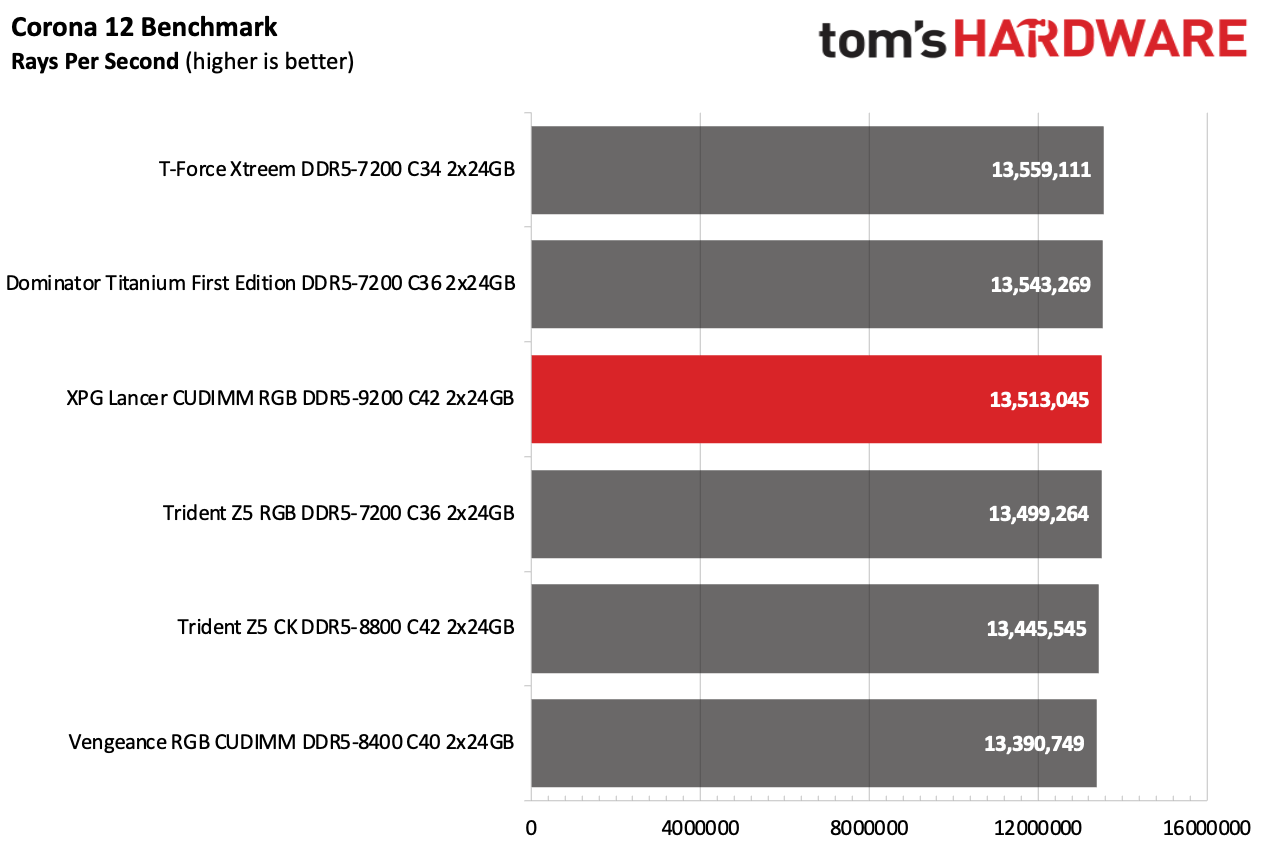
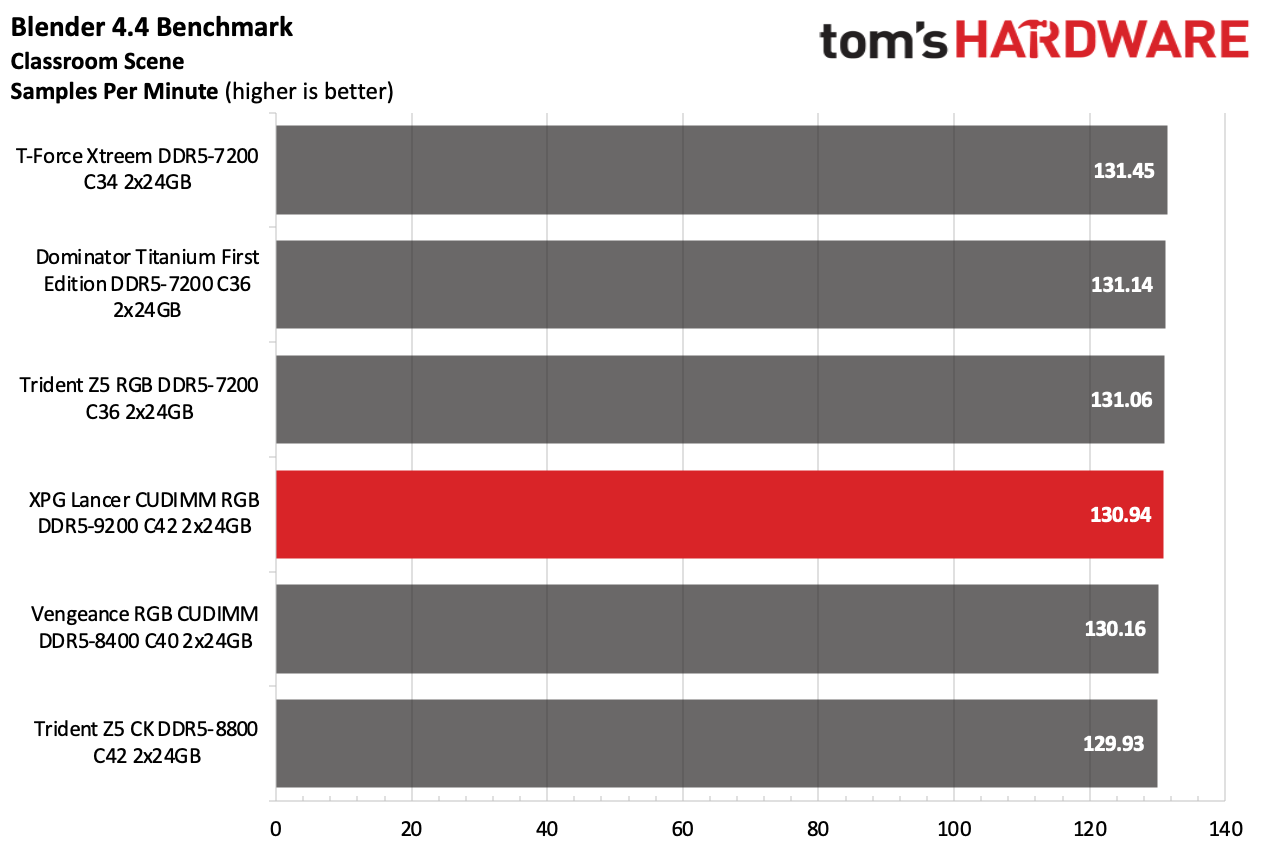

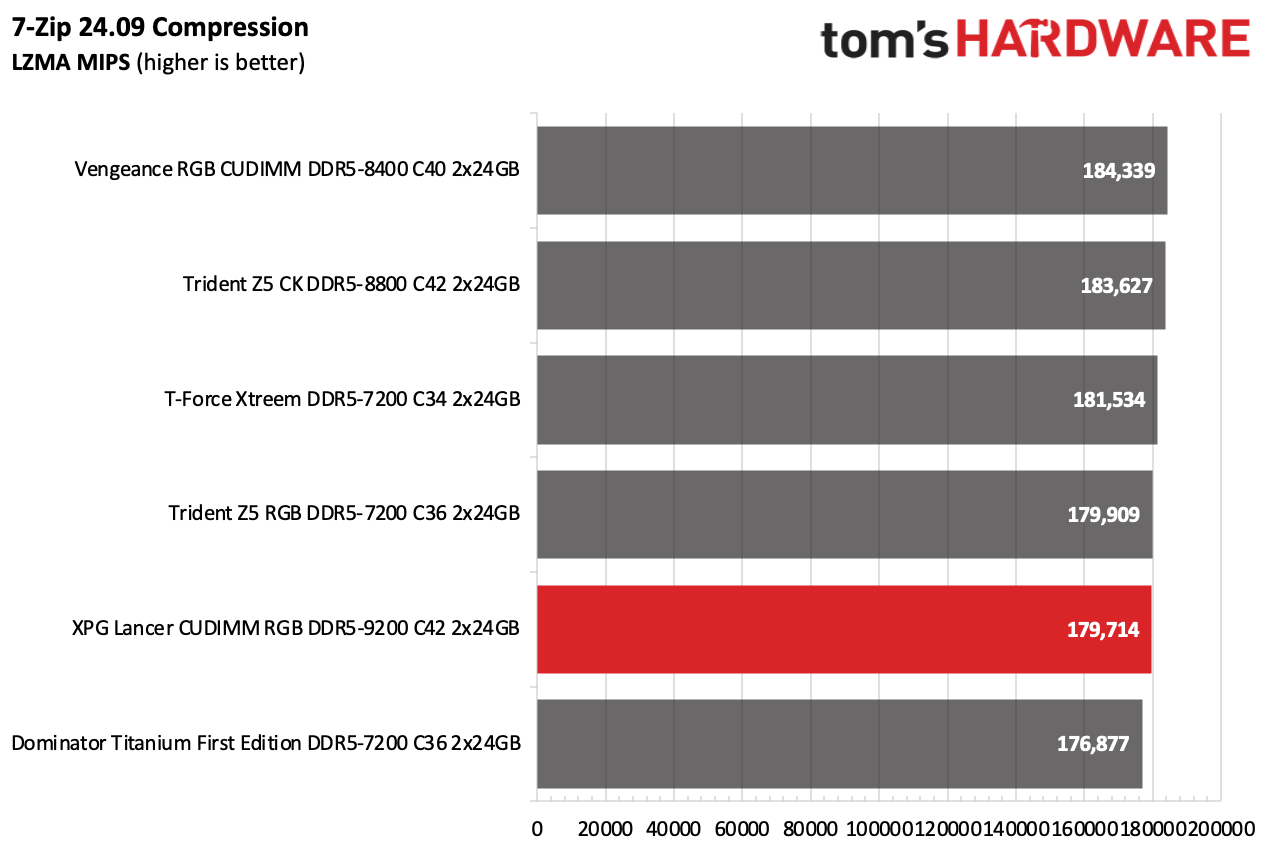
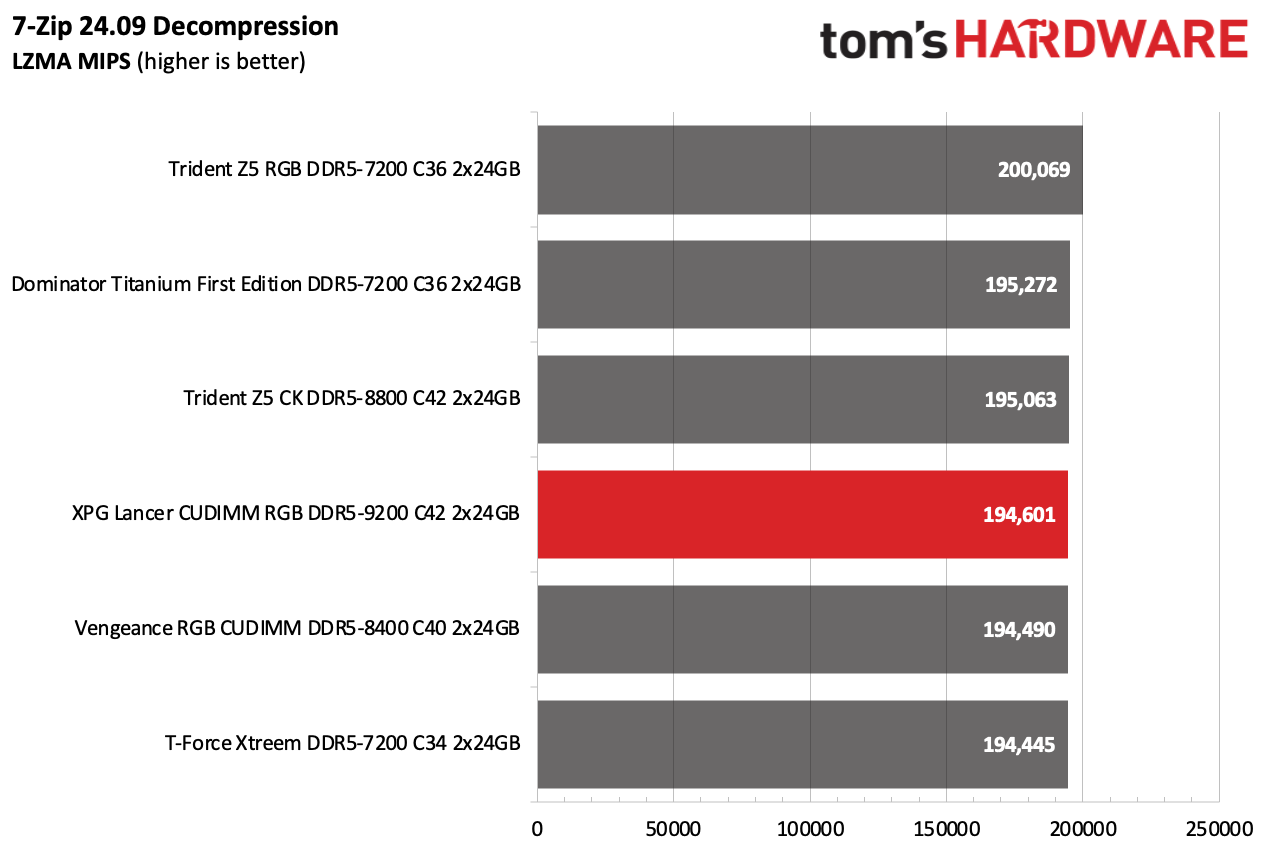
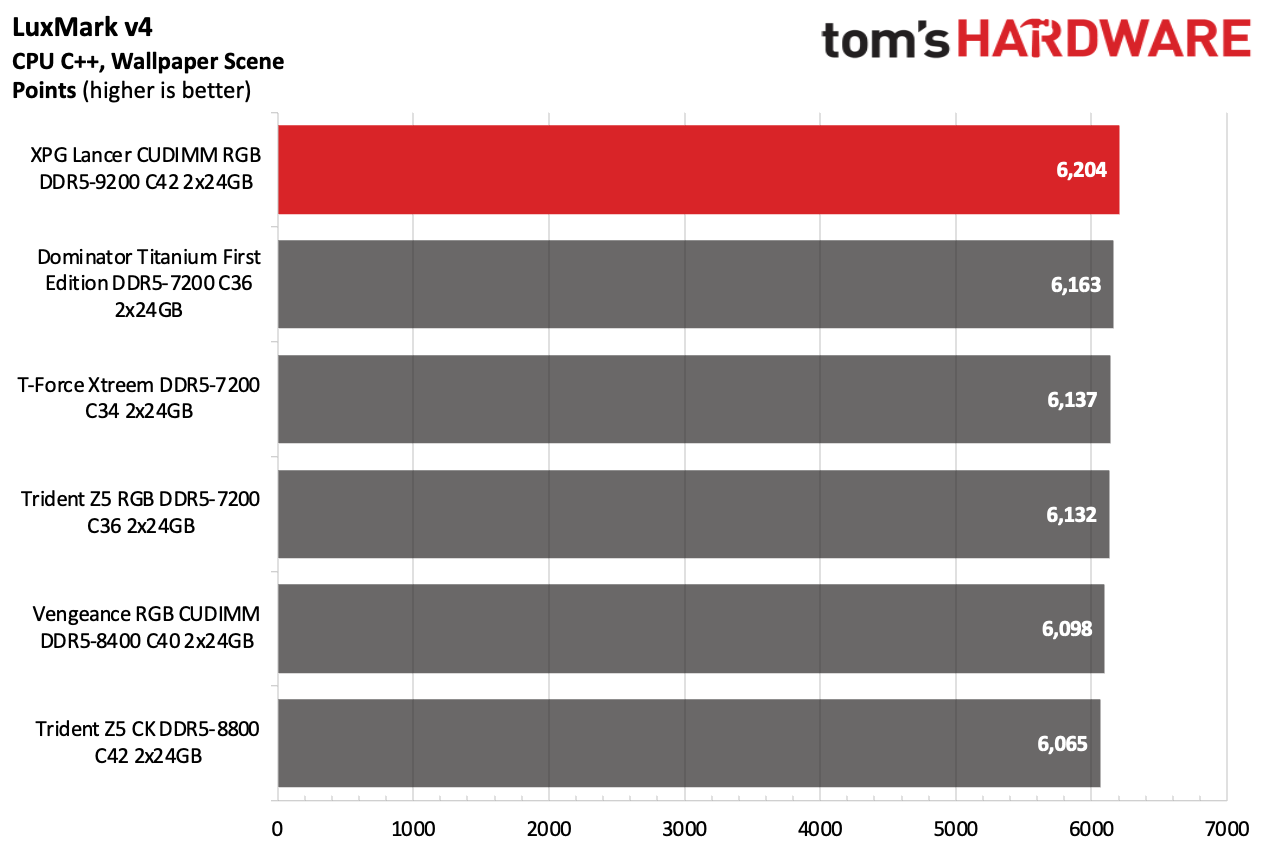
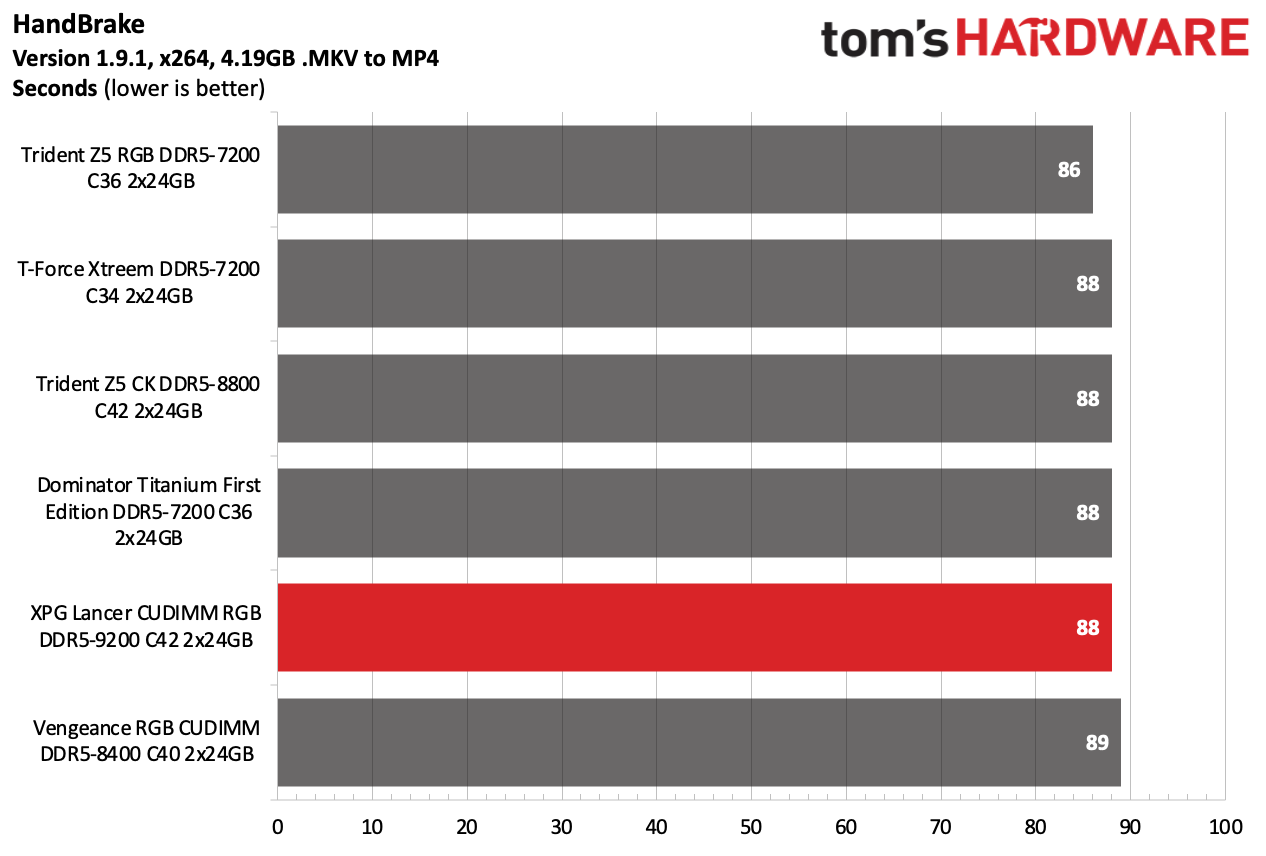
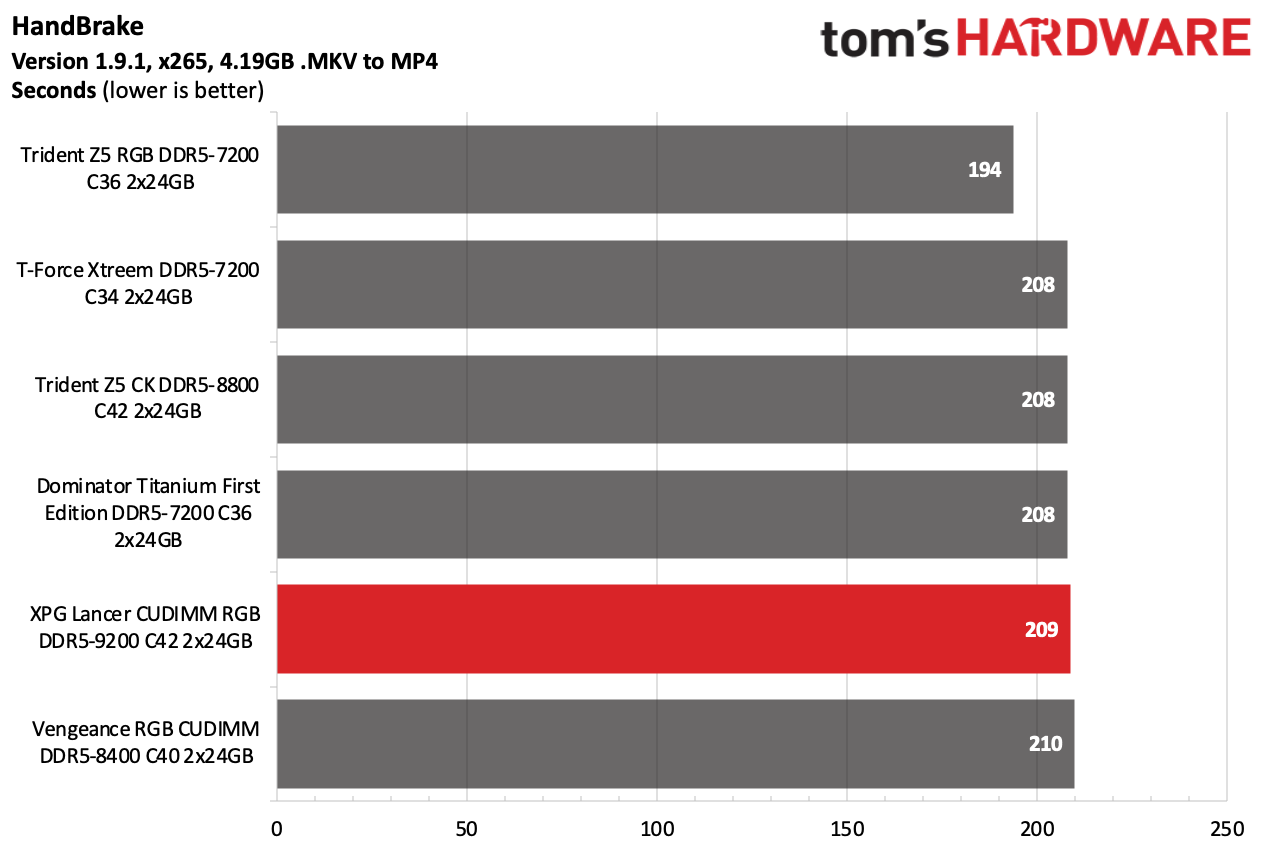
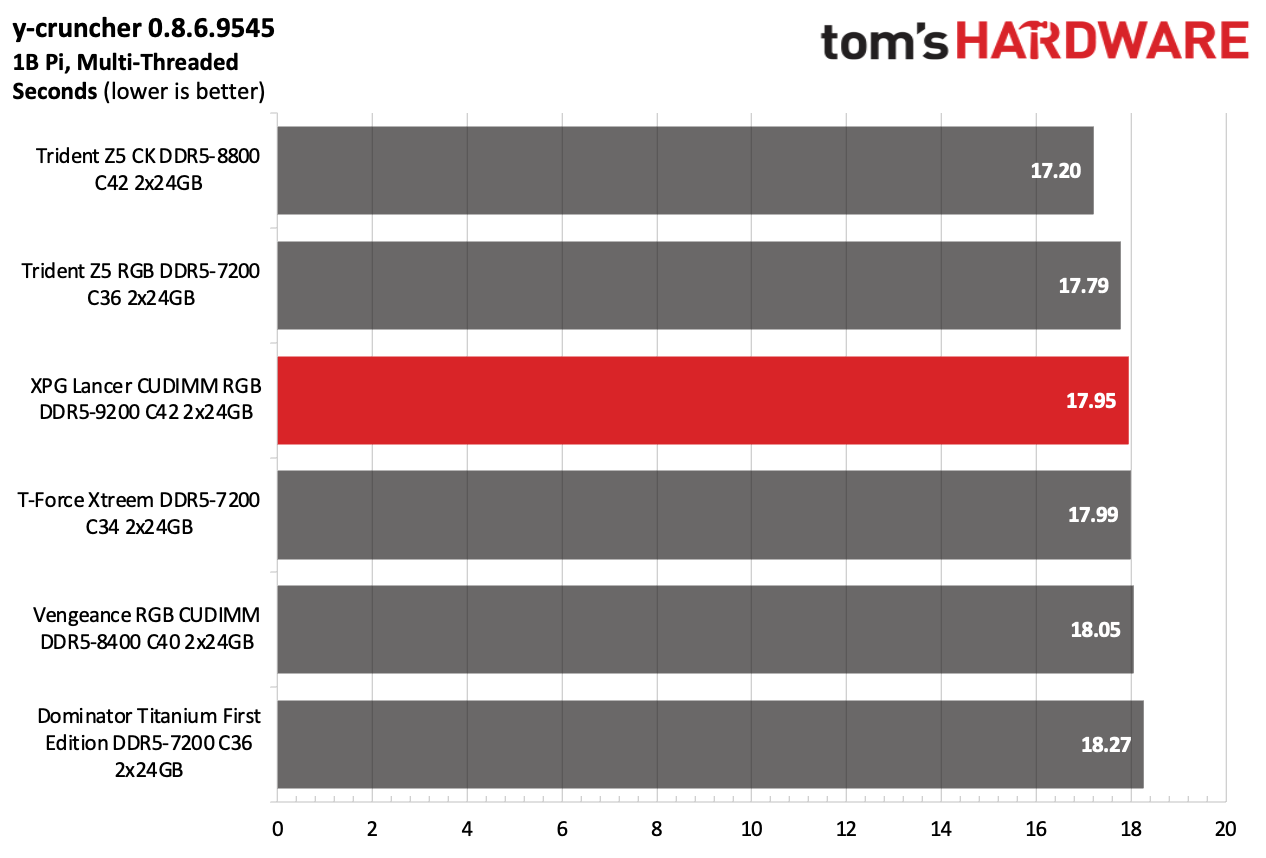
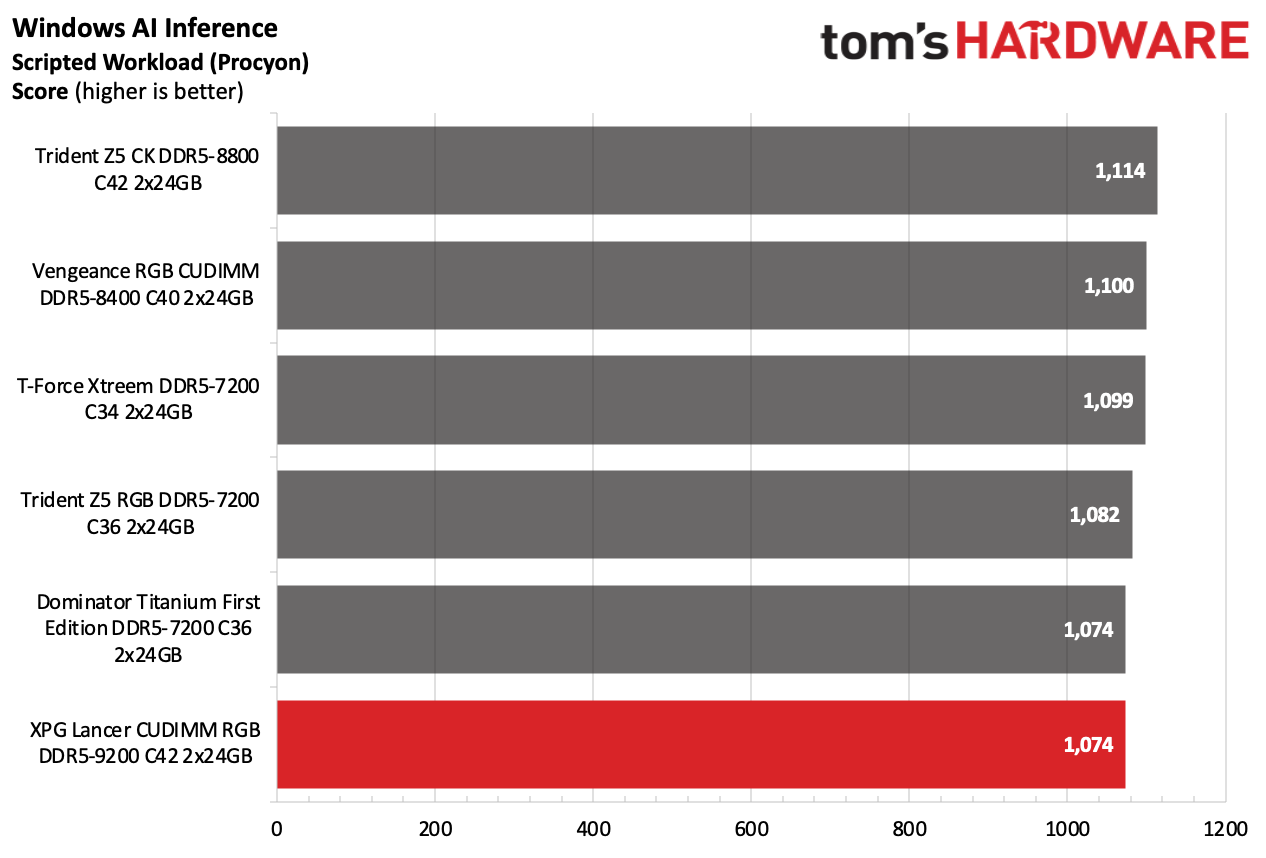

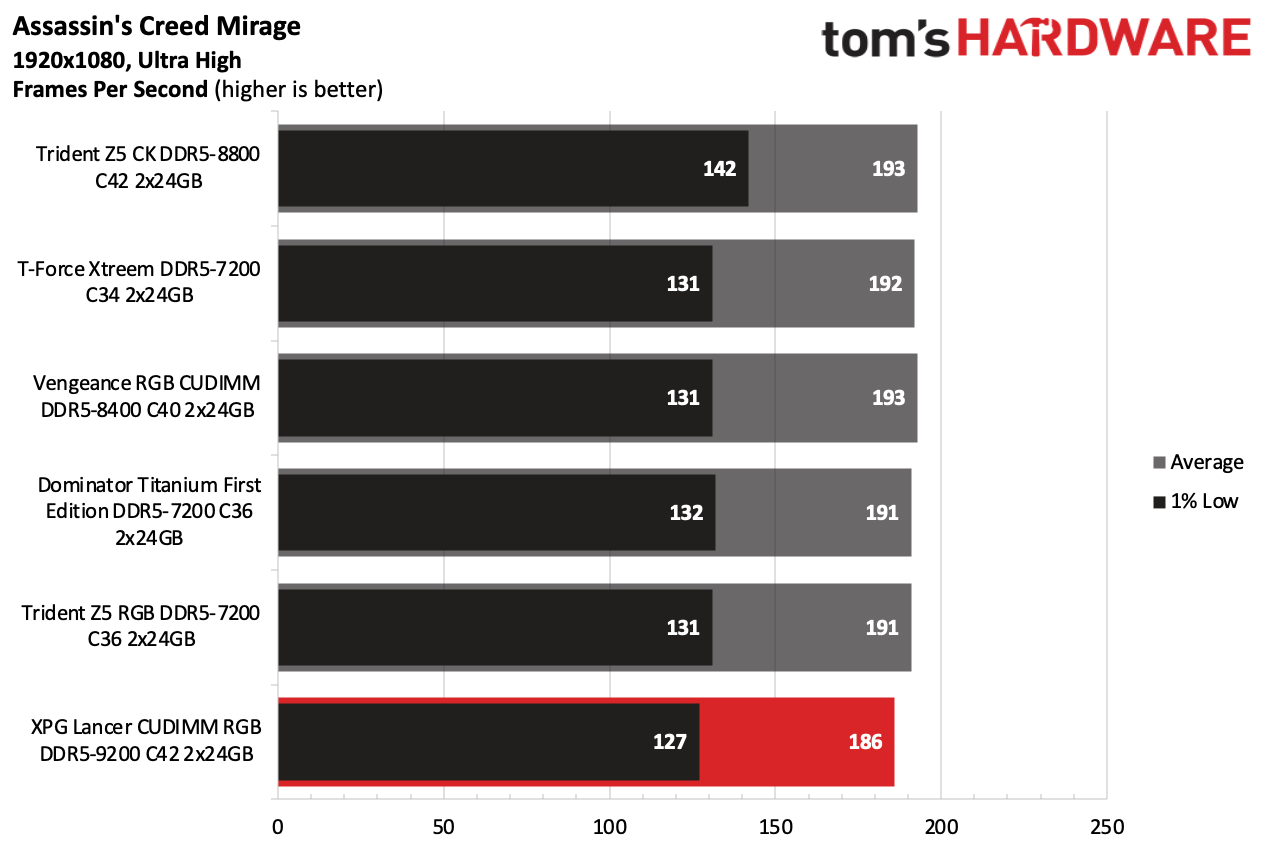
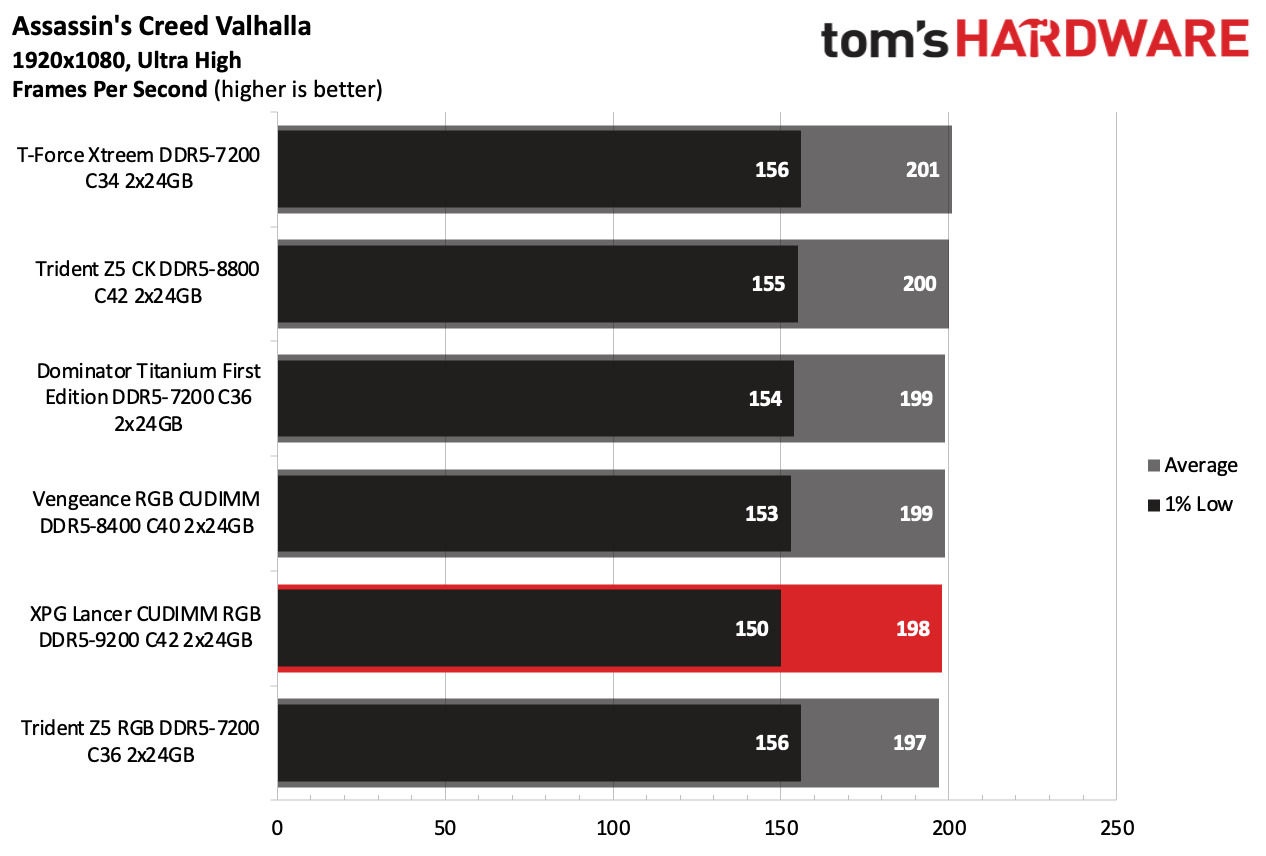
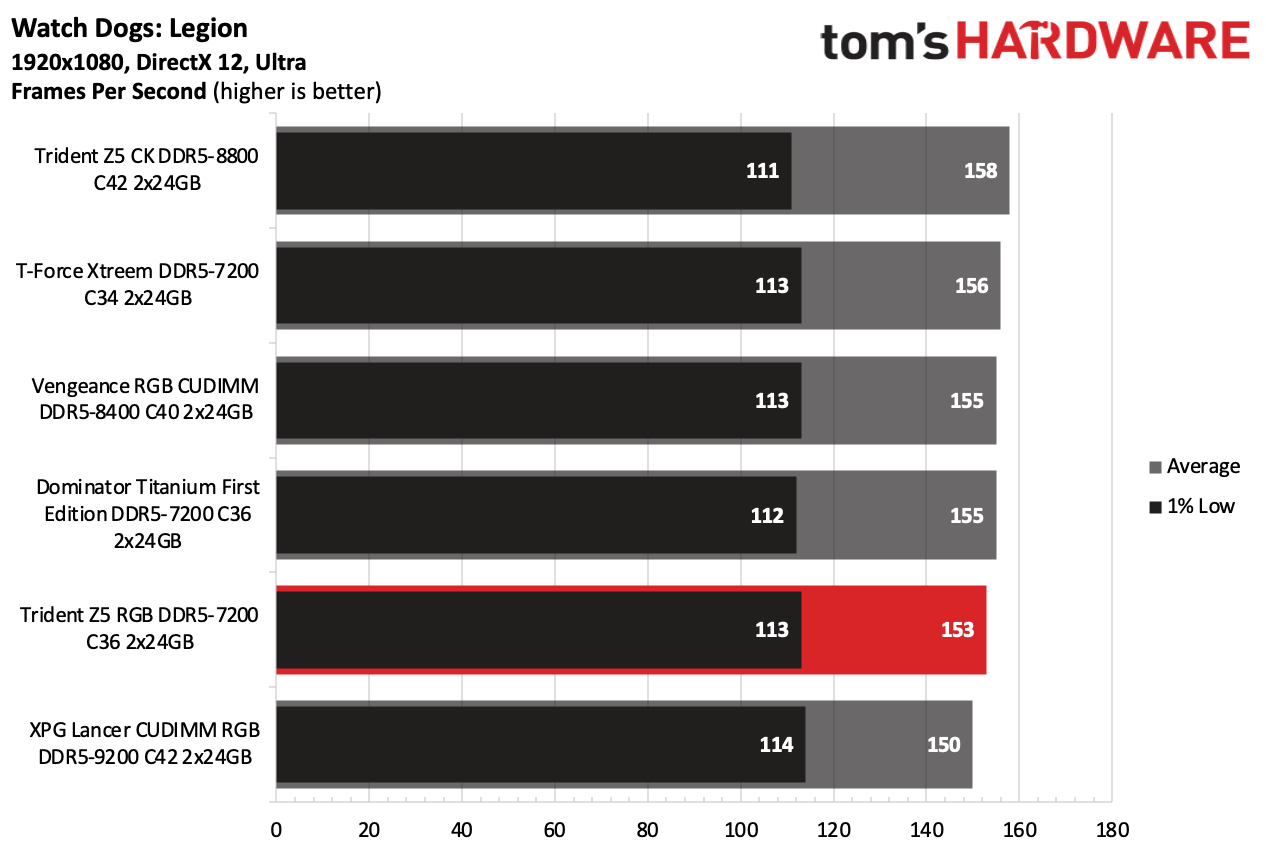


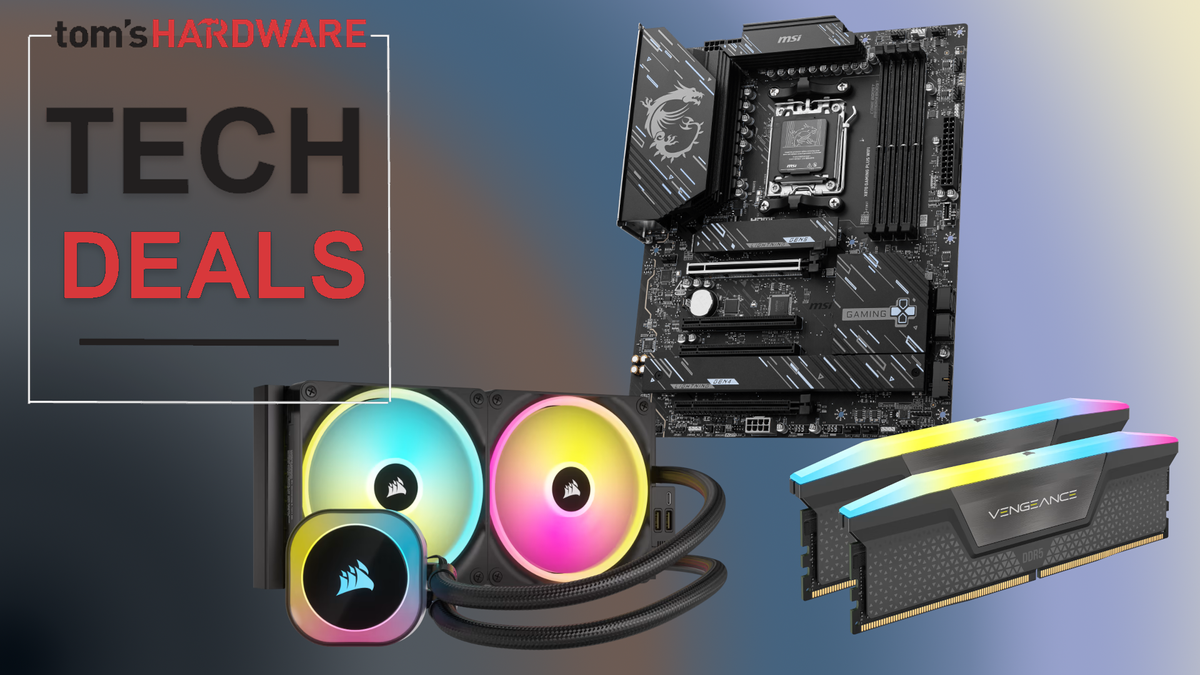
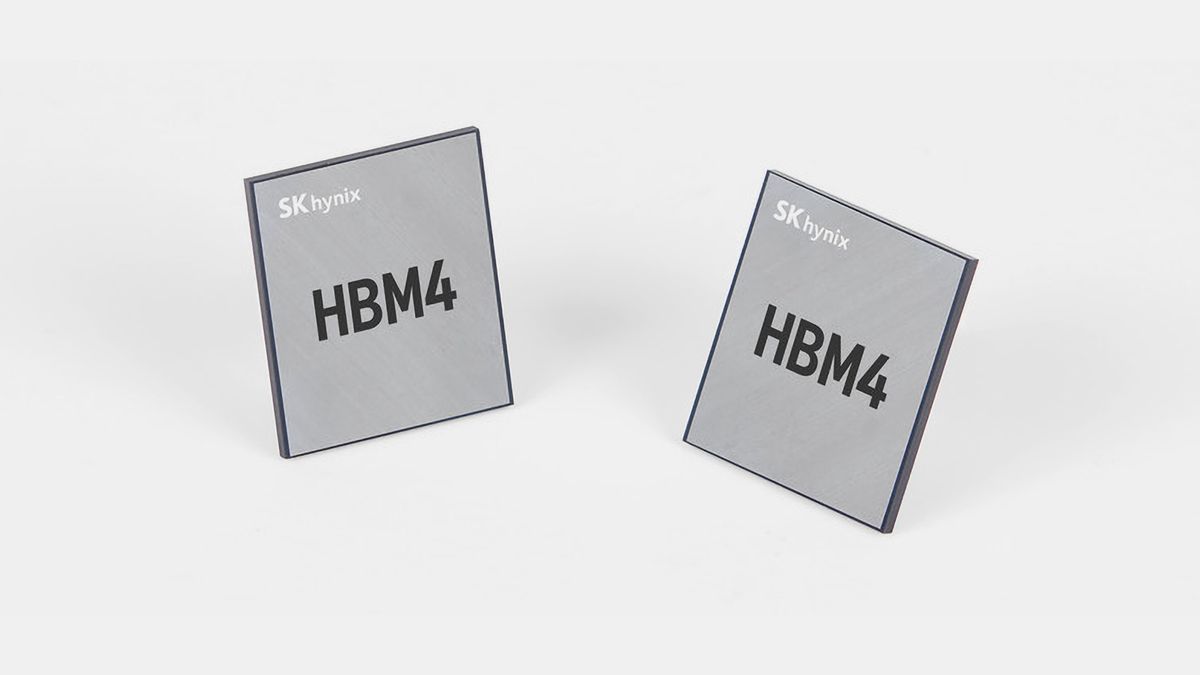


 English (US) ·
English (US) ·